


The official newsletter of the Dental Hygienists Association of Australia Ltd Issue 65 December 2022-February 2023 Privacy and consent Keep within guidelines when logging your patients’ data Worrying signs We highlight the perils of working outside of your scope STATE ROUND-UP Find out what’s happening in your local area Make your career move How to navigate the job market successfully + Provider number update Understand the latest changes
For over 25 years Chlorofluor mouth rinse and gel have been the gold standard, Australian made product for treating bleeding gums, oral inflammation and oral infections. PDS have released the Chlorofluor Toothpaste to this range. With all the benefits of chlorhexidine and fluoride, this light textured toothpaste leaves a fresh, minty flavour in the mouth and enables patients to easily transfer to an oral medicament without altering their brushing habits.

Due to the natural abrasive quality of the toothpaste, it is unlikely to cause staining and can be used for extended periods for ongoing gingival management. Available in 130g tubes

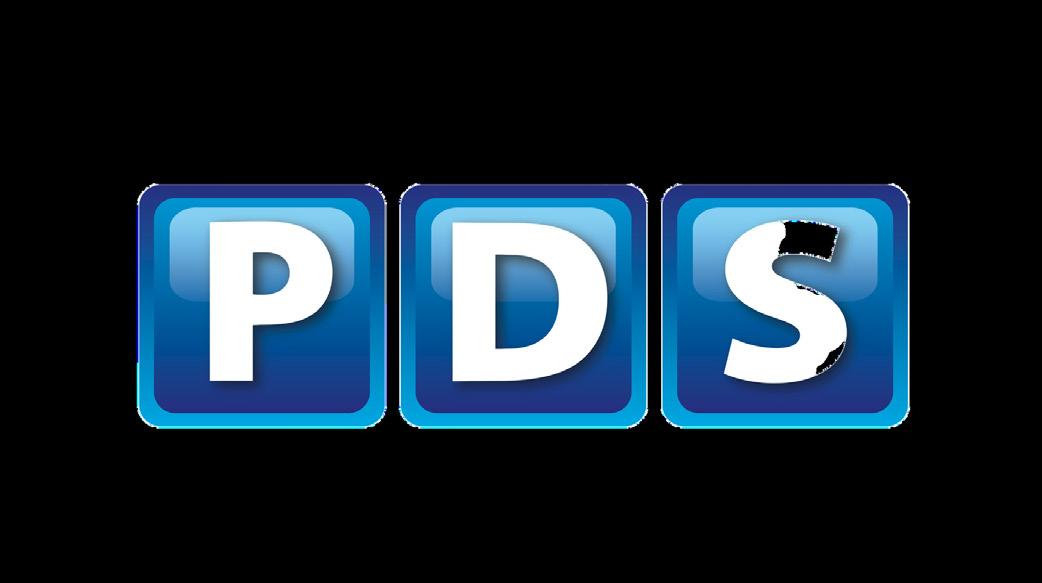
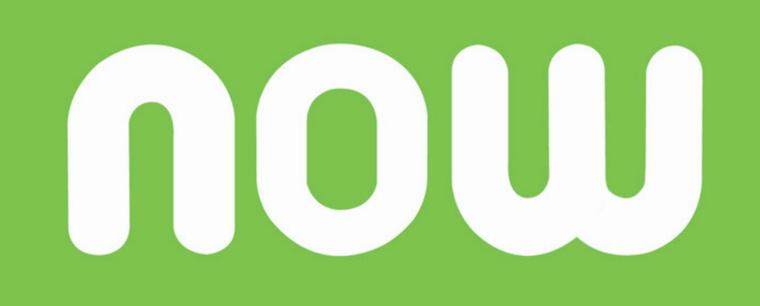







The NOW teeth whitening system offers super efficient teeth whitening without the time and expense of making custom trays. Patients can leave their appointment ready to whiten their teeth at an affordable price. All it takes is 15 minutes once a day for four weeks to achieve safe, natural long lasting results. The soft silicone tray whitens both upper and lower teeth at the same time for extra efficiency. Fitting comfortably in the mouth, it is designed to trap the whitening gel among the small nodes, ensuring close contact to teeth with no uncomfortable overspill. NOW 16 and NOW 10 are high viscosity gels in a 16% and 10% Carbamide Peroxide solution.


Whiten and Brighten your smile NOW!
PROFESSIONAL DENTIST SUPPLIES - 3/8 NICOLE CLOSE BAYSWATER NORTH VIC AUSTRALIA - 03 9761 6615 - sales@profdent.com.au - ABN 69 088 275 576 WWW.PROFDENT.COM.AU
New faces providing continued stability
On behalf of re-elected DHAA President A/Prof Carol Tran, whose role I’ll be acting in while she is on maternity leave, I am delighted to announce the new DHAA Board for 2023, that was confirmed at our recent meeting in Brisbane over the weekend of 5-6 November.
We welcome our newest Victorian director, Dr. Roisin McGrath, who I’m sure many of you know. We’re delighted to have such an accomplished professional on the team.

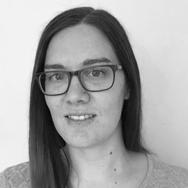

We say goodbye to Tasmania Director Alyson McKinlay and South Australia Director Cheryl Dey who is also a former Treasurer and President. Cheryl led us through the growth of our association with the appointment of our first CEO and showed great leadership as we navigated the uncertainty of COVID. We thank them both for their dedicated commitment and service to the Association and we will miss their valuable input.
Vice President A/Prof Ron Knevel is also stepping down, but staying on as an external director.
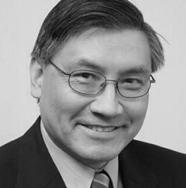
Continuing in their roles are New South Wales Director Warrick Edwards, ACT Director Amy McDermott and Northern Territory Director Hellen Checker
A/Prof Carol Tran is continuing as DHAA President with Western Australia Director Phoebe Thomas taking on the role of DHAA Vice President and I will be continuing as DHAA Treasurer. Portfolios have not been allocated at this stage, but we will keep you posted.
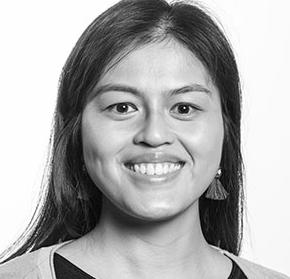
2022 has been a year of getting back to a new normal. Face-to-face gettogethers have been a priority and our National Symposium in Darwin was a triumph; with over 250 delegates, 23 national and international speakers, 19 trade exhibitors and 11 sponsors we considered it a success.
Under the current wave of public cyber-attacks, we would like to reassure members that their data is safe. We have reviewed our cybersecurity measures and are satisfied that we have taken adequate steps to protect member data as our system meets key Australian and international cybersecurity standards.
A new year always holds such great hope and anticipation. I wish everyone a wonderful summer, holiday season and an amazing 2023. I also invite you to join me in wishing Carol Tran all the very best on the arrival of her new baby.
Michelle Kuss DHAA Acting President/Treasurer
Contents
04 Playing the numbers game
We highlight some key things about provider numbers.
10 Get your CPD fix online
More top courses to improve skills and accrue CPD hours.
14 Finding your passion
Do you really need it for career satisfaction?
18 Ask DHAA
Your questions answered.
COVER STORY
18 Making your career move
Tips and tricks to navigate the job market like a pro.
22 Take the plunge
A new career in the country could be just the job for you.
24 Risk management
What to do if your patient has a fall in your clinic.
26 Worrying signs Know your scope boundaries.
28 Manage your risk
Keeping everybody safe.
32 How safe is your data
Get to know the rules of data management.
36 Do something different
If life is getting you down, then try changing it up a bit
38 State of the Nation
A countrywide round-up and 2023 event calendar.
3 03
The Bulletin is an official publication of the DHAA Ltd. Contributions to The Bulletin do not necessarily represent the views of the DHAA Ltd. All materials in this publication may be readily used for non-commercial purposes. The Bulletin is designed and published by eroomcreative.com Key Contacts
CONTACT BULLETIN EDITOR
Jones CONTACT
CONTACT
CONTACT
CEO Bill Suen
Brie
MEMBERSHIP OFFICER Christina Zerk
PRESIDENT Carol Tran
Playing the numbers game

As of 1 July 2022, dental hygienists, dental therapists and oral health therapists have been able to apply for a Medicare provider number from Services Australia to access the Commonwealth Child Dental Scheme. In light of this change, the private health insurance sector is following suit, with some health funds recognising these Medicare provider numbers in their claim systems for dental benefits. Even if a practitioner doesn’t access the CDBS (e.g. in aged care), the Medicare provider number will be needed if claims are made through the private health funds for other dental benefits.
There is currently no access to the Commonwealth Department of Veterans Affairs Dental Benefit Scheme as it is undergoing a major review.
It is important to note that the provider number arrangement is purely a commercial funding agreement between the provider, the
With Medicare provider numbers becoming accepted and acknowledged across the country, DHAA CEO Bill Suen highlights some of the key things you should be aware of
funding agency and the patient. It does not change any professional and legal obligations of practitioners and their scope of practice. The funding agencies such as the Commonwealth Government and individual health funds are making their own rules for the public to access their benefits through dental hygienists, dental therapists and oral health therapists.
The Commonwealth Government has decided to allow practitioners the option to choose whether they wish to apply for their own provider number and claim CDBS directly, or continue the current arrangement to provide CDBS services under the dentist’s provider number.
Health funds such as Medibank, AHM and NIB are among the first to recognise our provider numbers from 1 July 2022. Unlike the Commonwealth Government, both funds are making provider numbers mandatory so that if a dental service is provided by a dental hygienist, dental therapist or oral health therapist, the claim must be made to these funds under the correct provider number of the practitioner and not through the thirdparty dentists. Both funds are giving providers time to make the change, with the deadline for NIB set at 1 Jan 2023 and Medibank is set for 1 July 2023. Other funds are in the process of making the changes while some funds are not recognising our provider numbers. Members are encouraged to apply for a provider number via Services Australia as soon as possible to avoid delays as we approach the NIB deadline in the coming weeks.
Dental hygienists, dental therapists and oral health therapists must practice within their own scope, and the Dental Board expects individual practitioners to know their scope. The Board has provided a self-reflective tool to
assist practitioners to determine their scope . It is important to note that each funding agency will determine if they pay a certain item code even if it is within the scope of the dental practitioner. They may also apply additional conditions to particular item codes over and above the description in the Australian Schedule of Dental Services and Glossary.
During this transition period, while the health funds are making the changes, there will be challenges for dental practices in determining whose provider number to use when submitting a claim. Practices should check with individual funds to ascertain their arrangements with our provider numbers. If a claim submitted
SHORT & SWEET
CHOOSE YOUR CHAIR
Nominations are now open for the roles of state and territory committee chairs and deputy chairs. The state committees play an essential role as the interface between DHAA and its members and stakeholders. The term starts Feb 2023 for 12 months.
This is an excellent opportunity for DHAA members to be involved and make a difference for their peers, learn new skills, and build their professional network with the support of the DHAA board and executive. The completed nomination form must be submitted to ceo@dhaa.info by Friday 23 December 2022. Self nominations are accepted.
DOWNLOAD THE FORM
using our provider number is rejected, it could be re-submitted using the dentist’s provider number and the correct item code.
DHAA members have access to various resources and training on provider numbers via the DHAA website. This resource page provides information on the application process for provider numbers, recording of training webinars, position statements, details of CDBS and updated private health insurance status.
Individualised advice can also be obtained on request by emailing contact@dhaa.info
HAPPY HOLIDAYS

The DHAA Office will close at 5pm AEDT Friday 23 December and reopens at 9am on Tuesday 3 January 2023.
The DHAA Board and staff would like to wish everyone a very happy and joyful festive season over Christmas and New Year; and we look forward to seeing you all in 2023.
For urgent matters during this time, please email ceo@dhaa.info or phone 0412 831 669.
n
“It is important to note that the provider number arrangement is purely a commercial funding agreement between the provider, the funding agency and the patient.”
5
Internationally represented
The DHAA IFDH Delegate, Cheryl Dey, reports from the 2022 International Symposium on Dental Hygiene in Dublin


This year was the 35th anniversary of the International Federation of Dental Hygienists (IFDH). It was also the turn of Dublin, Ireland, to host the 13th International Symposium on Dental Hygiene (ISDH), which was a great success.

The event was held in the quaint little town of Malahide, on the east coast of Ireland, about 30 minutes outside of Dublin.
Presided over by IDH President Corrie Jongbloed, the welcome reception for the house of delegates allowed everyone to meet and catch up with some new and many familiar faces. In total, 24 of the 35 member countries were represented, along with several observers and individual members.
Highlights included reports from each member country and committee, voting for the new board members, unveiling a new logo and website for IFDH, and a look into the future of newly-elected President Wanda Fedora from Canada. There were updates from Ireland on final details for the 2022 ISDH in Dublin, from Korea on the 2023 ISDH being held in Seoul, and from Italy on the 2026 ISDH destined for Milan. An exciting presentation from UAE
secured Dubai as the chosen venue for 2028.
New board members were nominated and elected. The results of the Board of Directors (2022-2024) elections are;
• President: Wanda Fedora (Canada)
• President-Elect: Jill Rethman (USA)
• Vice President: Fouzieh Eliassy (Sweden)
• Secretary: Sharon Freidman Yaniv (Israel)
• Treasurer: Donna Paton (Ireland)
Delegates, observers and guests were treated to dinner at the seaside Abbey Tavern, one of the oldest pubs in Ireland. This was another chance to socialise with the delegates and enjoy some festive Irish food, Irish folk music and traditional Irish dancers.
It was a jam-packed day, with a halfday of meetings and seminars for the delegates before heading into Dublin for the ISDH.
As always, the opening ceremony, with its Olympic-like parade of flags presentation was an awe-inspiring event for the audience of almost 800 participants from 40 countries.
The goal of the symposium was to uncover the vital role oral health practitioners play as primary healthcare providers through the exploration of evidence-based and innovative approaches. This was achieved through the presentation of 87 oral sessions and 87 posters around the theme of the symposium “The Future in Our Hands”, with presentation sub-categories of Adapt, Learn, Care, and Enable.
The feedback from participants, exhibitors and sponsors was all very positive with many delegates commenting “the quality of lectures was extremely high and clinically relevant.” This symposium continually brings together oral health practitioners from around the globe. It provides an important forum for the sharing of knowledge, the building of understanding, and the discussion of issues related to oral health.
Normally at ISDH, there is a gala dinner. This year, it was done Irish style, with a pub-like evening at the famous Guinness Storehouse factory, reserved completely for ISDH attendees. It was a fun night strolling through the factory, gift shop and listening to Irish music and watching the dancers perform. And of course, the view from the 360 Bar on the top floor was incredible.
The new IFDH Board of Directors was installed, and outgoing President Corrie Jongbloed presented newly elected President Wanda Fedora the IFDH gavel for her term.
Thanks to the local organising committee and to the Irish Dental Hygiene Association for presenting such a professional symposium and organising social activities that were enjoyed by all.
IFDH looks forward to its next International Symposium in Seoul, South Korea, July 2024. See you there!
The DHAA winner’s view
QUEENSLAND DHAA MEMBER
Gaynor Ewens won the DHAA competition and received complimentary registration and accommodation to attend the 2022 ISFH in Ireland in August.
Here, Gaynor explains how this was a particularly momentous occasion for her; she got to celebrate her 40th year in dentistry by attending her first international symposium, along with her mascot Gumnut.



“Dental Health Week saw our practice run a competition to name our Tooth Fairy Koala mascot. The winner won an electric toothbrush and Hydropik and the name Gumnut was chosen.
After arriving in Dublin we had a few days to settle in and went on some local tours. Their history and culture is so full and interesting.
Then it was off to register for the symposium. As I was leaving the centre after registration I ran into Kathryn Novak, who I had graduated with from Adelaide back in 1989!
The opening ceremony was brilliant, with such a ‘heart-full’ moment when the Australian flag came out. There were over 30 countries represented. The ceremony included some traditional Irish music and dance with awesome musicians and dancers who got us all up for a jig!
The choice of lectures was incredible with such a diversity of topics covered. The subheadings of Learn, Enable, Care and Adapt made topic choices easy. Speakers were from so many countries and made every effort to be understood and available for questions after each presentation.
The trade show was well supported with plenty of products on show. Gumnut got her share of attention from the exhibitors taking photos. She also had a fun time meeting many of the delegates.
The choice of the iconic Guinness Storehouse as the venue for the party was inspired. Fantastic food, drink, Irish music and dancing formed part of the festivities.
I have had a fabulous time relishing in friendships (old and new), expanding my knowledge in dentistry and enjoying the diverse culture and history of Ireland.
Congratulations to the coordinating group for a very well thought out program and event. ISDH 2022 was brilliant from start to finish, well done!
I’d like to thank DHAA for the wonderful opportunity I was given to attend ISDH 2022. I would also like to thank my practice Oar and Horan Dentists for getting behind me and helping make this trip happen.” n
7
DHAA Symposium heads to Adelaide
NO SOONER HAS the dust settled from the hugely successful National Symposium in Darwin and we’re already talking about the next one!
Planning is well underway for the annual Dental Hygiene showcase to roll into the Adelaide Convention Centre from 21-23 September 2023.

This year’s theme of synergy and sustainability is bound to inspire and enthuse all that attend. Visit dhaa.info/ Symposium2023 to discover more.

Vale Jenny Both
Born on 8 September 1961, Jenny Both passed away on 4 June 2022, aged 60. Jenny spent most of her working life as a dental hygienist after graduating from Gilles Plain TAFE in 1985. She was a dedicated and technically adept hygienist, with a particular talent for communicating with patients and developing long-term relationships. She loved her work and continued after her diagnosis of Motor Neuron Disease, right up until 2020 when MND affected her ability to do the job.
She started her working life as an 18 year-old nurse for Richard Huebl and alongside the hygienist Chris Corner, both of whom encouraged her to apply for the course at Gilles Plains. As well as gaining the dental hygienist qualification, the girls on this course developed a close bond and many became lifelong friends.

In 1982 Jenny married Geoff Both and the couple went traveling overseas for 18 months, with Jenny working
through the London winter in various dental practices. They then moved to Canberra where Jenny proved herself to be a skilled and caring clinician in the general practice of Yvonne Vidovich and the periodontal practice of Noel Egan.
A move to the UK for two years in 2001 provided a break from work for her to enjoy travel and family adventures, and upon eventually returning to Adelaide she worked at Shepherd’s Hill Dental Centre (then Adrian and Sue Gaffney) and Bath Street Dental Practice (Guy Freeman and Vicki Drivas).
Always keen for an adventure, Jenny and Geoff lived in New Delhi India from 2011-2014. During this time she frequently returned to Adelaide for family visits and to work at the Adelaide practices where she was always in demand by her patients, many basing their recalls around her visits.

Jenny was an active member of the DHAA and always committed to professional development and various committees. She established colleagues and friends across Australia and her enthusiasm, humour and warmth was a motivation to others.
Jenny will be sadly missed and lovingly remembered by her family, friends, colleagues, and patients. n
8
A year of achievement
Bill Suen DHAA CEO

2022 IS ANOTHER great year for our association and our profession. After many years of tireless and persistent work by successive boards and committee members, we finally gained access to provider numbers and billing rights as a truly independent dental practitioner. The next 12 months will be challenging for both the profession and the various funding agencies including private health funds as we transition through this significant change. The DHAA has been working behind the scene to support everyone through this period. Members are welcome to get in touch with us if you need any assistance and information on this. This year we welcome our first cohort of members who completed the DHAA Aged Care Education Program. A number of them are already set up and providing outreach services to residential aged care facilities across the country. We are looking forward to seeing more graduates from the education program as we move towards our goal of having an oral health practitioner visiting every second facility by 2026.
We also saw the full return of faceto-face events across the country as we learn to live with COVID. I am most grateful to the state committees’ hard work for bringing these events
to our members both in major cities and in country locations. These were often done under fairly challenging environments with unpredictable weather conditions making it hard for attendees to travel. Their hard work in planning ahead allowed us to release our 2023 event calendar early. Please look out for your Christmas mail of a hard copy DHAA calendar in the coming weeks. There is currently a call out for volunteers to join our state and territory committees as chairs and deputy chairs. Please email me (ceo@dhaa.info) if you are interested in getting involved to support our peers both locally and nationally.
The return of the DHAA National Symposium in Darwin was well received with the attendee number well above our expectations. During the Symposium, we launched the DHAA consumer oral health website and ongoing work is being undertaken to provide more consumer oral health information flyers via the site.

We have also built a much stronger
relationship with ADOHTA as we have been providing joint presentations to oral health students and graduates, working collaboratively on the advocacy front, setting up a joint provider number expert advisory group to support the transition, and developing a joint CPD workshop roadshow for 2023. In parallel to these initiatives, the TOPA (Towards One Professional Association) working group has been progressing as scheduled, with phase four near completion for review by the DHAA and ADOHTA boards in the new year.
As we approach the festive season and reflect on our success over the past year, I would like to thank the board, committees and Special Interest Groups (SIG), all the volunteers and my staff for working so well together to navigate through the many challenges. It has been a great team effort.
Wishing you all a happy festive season with your family, and looking forward to seeing you back in a prosperous 2023. n
9
FROM THE TOP
The DHAA has seen some significant wins in 2022 and the Association is well-prepared to face the challenges of a new year
A welcome return to in-person events at the DHAA National Symposium in Darwin
We focus on a range of subjects including; Monkeypox, climate change and power brushing. Truly something for everyone.
Prepare for monkeypox
What you need to know?
Infection control is critical for the safe delivery of dental care. Infection control practices must be responsive to emerging and re-emerging infectious diseases and outbreaks, as was clearly seen during the peak of the COVID-19 pandemic. An emerging global outbreak
of the monkeypox virus has again raised potential challenges for infection control in dentistry. Monkeypox is an infectious disease, characterised by a rash affecting the skin and soft tissues, including the oral cavity.

Previously, cases were mostly seen following contact with infected animals in Central and West Africa, with limited human-to-human transmission within and outside of these areas. However, since May 2022, sustained human transmission has occurred globally. Monkeypox can be transmitted via close contact with an infected person, contaminated objects and surfaces, or by droplets and possibly aerosols, which
is therefore of potential importance to dental settings.
This article discusses the relevance of monkeypox to dental professionals, the typical presentation of the disease, its potential impact on infection prevention and control practices, and the delivery of dental services. The current monkeypox outbreak highlights the need for a more sustained programme of research into dental infection control that can provide a solid evidence base to underpin preparedness planning for future outbreaks and pandemics.
• Published online: 14 October 2021
• Authors: Various
• Suggested CPD hours: 0.5 scientific
FIND OUT MORE
Cancer sensitivity

Risk of subsequent primary oral cancer in a cohort of 69,460 fiveyear survivors of childhood and adolescent cancer in Europe: the PanCareSurFup study
Survivors of childhood cancer are at risk of subsequent primary malignant
10
Get your CPD fix online Our regular update on some great courses to improve your skills and top up your CPD hours
– Be aware of what to look out for
Monkeypox
neoplasms (SPNs), but the risk for rarer types of SPNs, such as oral cancer, is uncertain. Previous studies included few oral SPNs, hence large-scale cohorts are required to identify groups at risk.
One hundred and forty-five oral SPNs (64 salivary gland, 38 tongue, 20 pharynx, two lip, and 21 other) were ascertained among 143 survivors. Survivors were at a five-fold risk of an oral SPN. Survivors of leukemia were at the greatest risk followed by bone sarcoma, Hodgkin lymphoma, and soft-tissue sarcoma. Survivors treated with radiotherapy were at 33-fold risk of salivary gland SPNs, particularly Hodgkin lymphoma and leukaemia survivors. Survivors treated with chemotherapy had a substantially increased risk of a tongue SPN. Previous radiotherapy increases the risk of salivary gland SPNs considerably, while chemotherapy increases the risk of tongue SPNs substantially. Awareness of these risks among both healthcare professionals and survivors could play a crucial role in detecting oral SPNs early.
• Published online: 1 November 2022
• Authors: Various
• Suggested CPD hours: 0.25 scientific
FIND OUT MORE
Power brushing
Third-party toothbrushing is associated with a positive patient experience: randomised, singleblind, patient-centered analysis
As the need for care increases with higher age, so does the need for assistance with oral hygiene. A recent study analysed the clinical effectiveness of oral hygiene assistance provided by caregivers. Patient perceptions of third-party toothbrushing are mainly positive regarding well-being and interactions with the toothbrushing person and do not depend on the qualification of the

brushing person or the toothbrush used (manual versus powered).
• Published online: 27 June 2022
• Authors: Anna Greta Barbe, Aya Al-Barwari, Ulrike Weik, Michael J. Noack & Renate Deinzer
• Suggested CPD hours: 0.5 scientific
FIND OUT MORE
Working around trauma
Avoiding psychological (re) traumatisation in dentistry when working with patients who are adult survivors of child sex abuse
Seven percent of the adult population in the UK, including one in six women, report unwanted sexual experiences before the age of 16. The impacts of psychological trauma following child sexual abuse (CSA) create difficulties for many survivors in accessing dental care due to fears of reminders of abuse, the power imbalance with the dentist, and triggered traumatic responses.
This is the first UK study to present qualitative data from CSA survivors about their experiences of dental care.
Survivors wish to access dental care but tailored support is needed to ameliorate reminders of abuse and traumatic stress triggers. Trauma-informed care may address difficulties with treatment if dental staff adopt flexible approaches and work collaboratively with survivors to facilitate relational safety. (Please note, in this paper, ‘survivors’ refers to those sexually abused as children).
• Published online: 28 October 2022
• Authors: Susanna Alyce, Danny Taggart, Indiana Montaque & Jackie Turton
• Suggested CPD hours: 0.25 scientific
FIND OUT MORE
Climate change, society and health inequities
Climate change will widen health inequities; action on the social determinants of health is essential
Climate change will widen health inequities; action on the social determinants of health is essential. This article has laid out ways of advancing planetary health equity goals. To help >>
11
Assisted toothbrushing is considered a positive step
achieve these, the health community must advocate for and engage in intersectoral policy discussions relating to the social determinants and the structural consumptogenic system. Acting immediately on these issues is critically important if we are to avert a planetary health inequity crisis.
• Published online: 17 October 2022
• Authors: Sharon Friel
• Suggested CPD hours: 0.25 non-scientific
FIND OUT MORE
Impact issues
The environmental impact of community caries prevention. Part 1: Fluoride varnish application
Healthcare is a significant contributor to climate change and planetary health. Prevention of oral disease, such as caries, is an important part of any mechanism to improve sustainability. Caries prevention includes community schemes such as water fluoridation, toothbrushing, or fluoride varnish (FV) application. FV application in dental practice during an existing appointment had the lowest environmental impact in all 16 categories, followed by FV application in schools. FV application at a separate dental practice appointment had the highest impact in all categories, with a majority of the impact resulting from the patient travel into dental
practice. FV application while a child is already attending dental practice (for example, at routine recall) is the most sustainable way to deliver FV. School FV programmes are an alternative, equitable way to reach all children who may not access routine care in dental practice.
• Published online: 26 August 2022
• Authors: Alexandra Lyne, Paul Ashley, Mark Johnstone & Brett Duane
• Suggested CPD hours: 0.25 non-scientific
FIND OUT MORE
Improving access
The history of efforts to improve access to dental care – “more twists and turns than an episode of Midsomer Murders”
In a recent analysis of why Medicare is not actually the “universal health insurance scheme” that it is claimed to be, health policy analyst and Croakey editor Jennifer Doggett said the lack of coverage for dental services was just one of many examples of how Medicare “fails the universality test”.
Amid growing momentum for Medicare reform at a time when waiting times for public dental services are blowing out to well over a year in many jurisdictions, it is timely to consider the history of efforts to improve access to dental care.
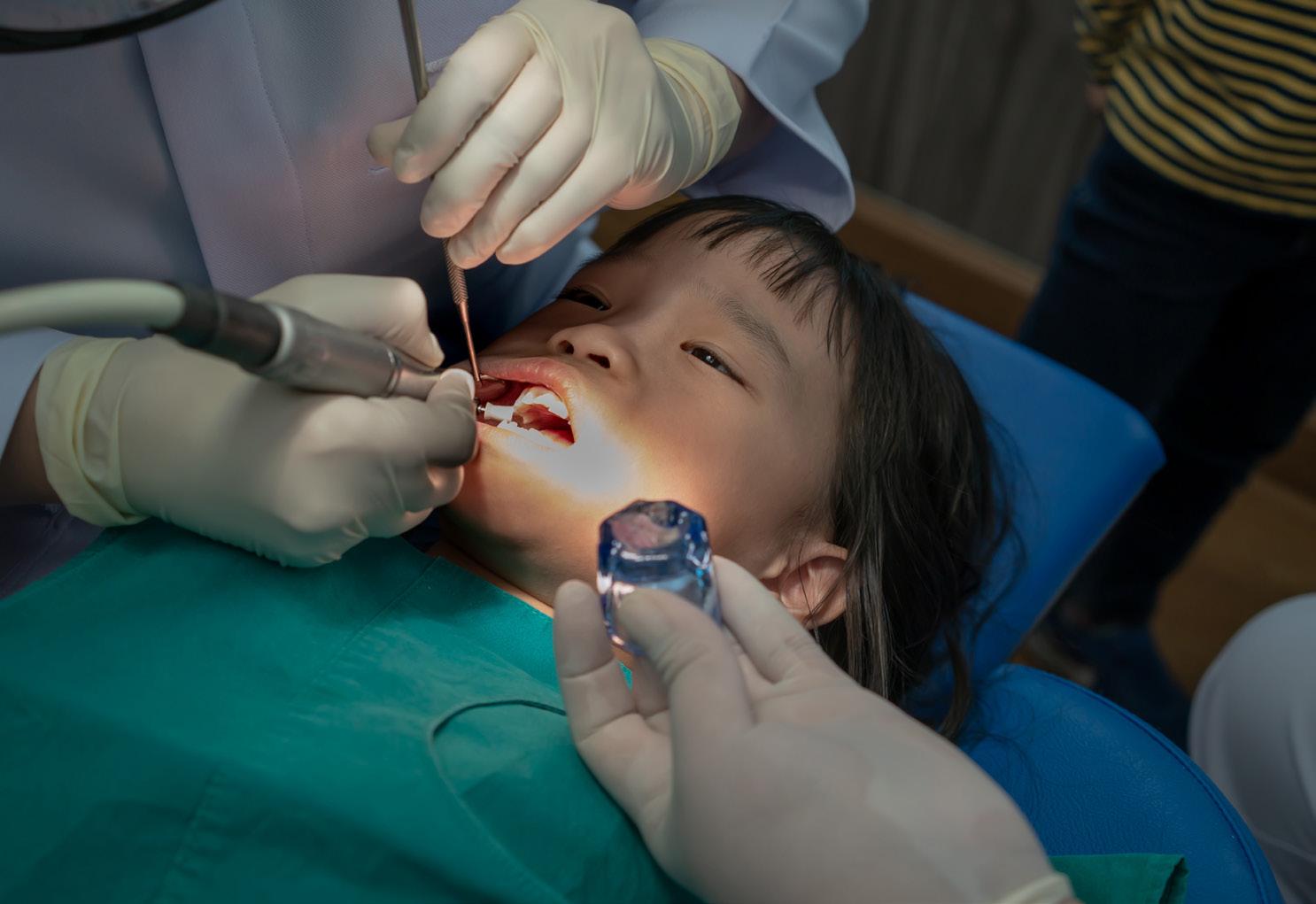
There are many lessons for wouldbe reformers from an examination of the “dental policy turbulence of the last twenty years”.
• Published online: 17 August 2022
• Authors: Charles Maskell-Knight
• Suggested CPD hours: 0.5 non-scientific
FIND OUT MORE
Implantology healing
Impact of bisphosphonate drugs on dental implant healing and periimplant hard and soft tissues: a systematic review Implantology represents the gold standard for oral rehabilitation, unfortunately, often, despite there being no local contraindications to this type of rehabilitation, there are uncertainties regarding the general health of our patients.
Many patients nowadays take bisphosphonate drugs, often without first seeking advice from an oral surgeon or a dentist. From this study it is understood that the use of bisphosphonate drugs does not represent an absolute contraindication to implant therapy, it is evident how adequate pharmacological prophylaxis and an adequate protocol reduce the risks regarding implant failures. Furthermore, the values of marginal bone loss over time seem, even if not statistically significant, to be better in implant rehabilitation with bisphosphonate drug association. Only a few molecules like risedronate, corticosteroids, or some conditions like smoking or diabetes have shown a high risk of surgical failure.
• Published online: 17 July 2021
• Authors: Luca Fiorillo, Marco Cicciù, Tolga Fikret Tözüm, Cesare D’Amico, Giacomo Oteri & Gabriele Cervino
• Suggested CPD hours: 0.5 scientific
FIND OUT MORE
How much is fluoride application impacting the environment?
Recently I have had several health related books recommended to me. After reading them, I have been so inspired I have found myself talking to anyone who would listen to me about them. With the time of year when some of us get the opportunity to sit with a good book, I asked the Bulletin if I could write book recommendations which they have so kindly said yes to.
The first book was a no brainer. ‘Breath; the new science of the lost art ’ by James Nestor. I first came across this book when doing a TMD/Orofacial dysfunction course. I added it to my list of ‘to read’ along with several other books recommended. I am not sure about you but I am very fascinated by all things airway. We are right there, all day every day watching and listening to people breathe. Every time I go to a course with a presenter discussing breathing related disorders such as OSA I have a light bulb moment. A patient’s face pops into my mind, the most recent gasper, wheezer, or mouth breather. For the patient where I could not get to the second molars to scale (realistically even the first was tricky) because the tongue was engulfing the whole oral cavity or the one, we all know so well, ‘the gagger’.
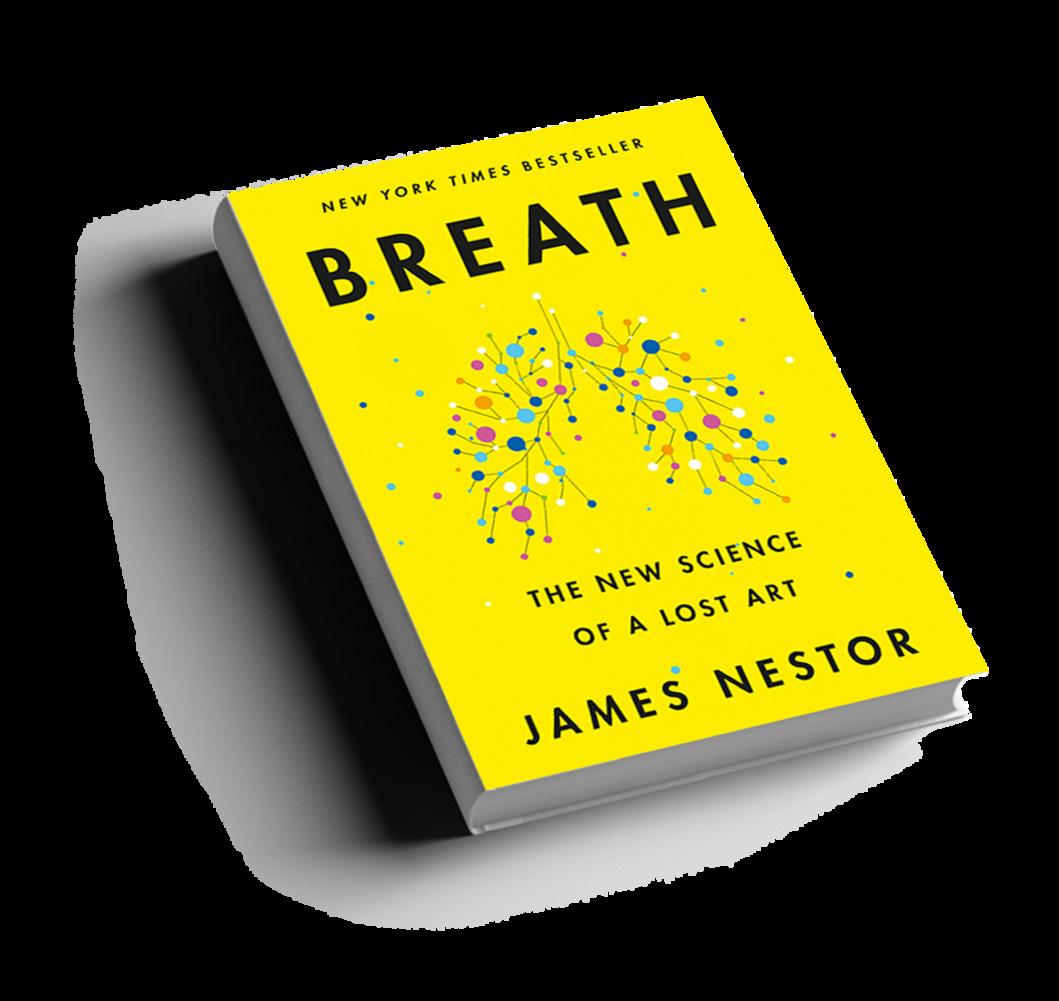
Nestor’s Breath sat on my to read list for about six months. I will be honest, I read a couple of the other books recommended and then forgot about the rest.. I am that student. Coincidentally though my boss handed me a copy as she thought I would enjoy it given my newfound love of airways. I took this as a sign from the book gods that it was time. When handing the book to me they mentioned, unlike most self help books which are based on ‘quackery’; they felt this book had validity with its evidence based research. I took that as quite the compliment! In saying that, this book is not a self-help book per se, though it is written for the reader who is looking to improve themselves.
This piqued my interest again and I got straight into it. From the very start I was hooked, Nestor’s personal story is so captivating as it is relatable. He starts by writing about his struggles to breathe as he has never been able to nose breathe properly. His narrow airways exacerbated by orthodontics had led to other health concerns which were affecting his whole life. Who hasn’t met someone like this? Nestor sounds like my dad, my brother, and my husband and I wanted to know more. Nestor›s experiences created a desire to find out more about how to not only help himself but to prevent others from having the same problems. What a dreamboat of a patient; he is desperate to help himself, but unfortunately found it difficult to get it conventionally. This lead to an adventure, or a rabbit hole depending on how you see it, of exploration into the world of effective breathing.
Years of research have been
condensed into a paperback to give the reader the best of what Nestor learned whilst attempting to master the art of breathing. We meet many different characters that Nestor comes across such as expert respiratory physicians to orthodontists and then the unconventional ‘pulmonauts’. The beauty of Nestor not having a health background is that this lends him to be more open minded to the unconventional. At one point Nestor pushes himself to severe hyperventilation in the hope to reach a type of euphoria. We also get to learn about the history of breathing and the ancient art of prana or chi. Our take home message is how proper breathing can transform your physical and mental health. He covers the basics such as don’t breathe through your mouth, breathe through your nose to the more complex aspects of healthy breathing which keeps the book interesting for those with prior knowledge.
I ended up listening to Breath as an audiobook through my local library on my way to and from work. This book really lends itself to this medium as at the end there are breathing exercises for you to try to improve your own breath. I really enjoyed being talked through the exercises as it meant I could concentrate on technique.
Breath is a very well written book that was entertaining every step of the way as Nestor combines personal experiences with history and science. I cannot tell you the number of friends, relatives, and patients I have recommended this book to. Anyone struggling to breathe and wanting help gets recommended this book in the hope it helps them find their breath. Breath is currently available in paperback from Big W for $16. n
Do you have a book, journal, or podcast that you think others would love to know about? Send it through to be reviewed; email the details to bulletin@dhaa.info
13
As part of an occasional series of book reviews, Danielle Gibbens turns the pages of Breath; the new science of the lost art by James Nestor
Finding your passion
Do you need it for career satisfaction?
By Melanie Aley
Aquick Google search of “finding your passion” will give you over 276 million results in under one second!! Many of us want to find our passion and assume that finding passion in our work will undoubtedly result in career satisfaction. However, passion doesn’t always result in positive outcomes at work.
While passion can be harmonious, providing motivation in a balanced way, it can also be obsessive and all-consuming (Lajom et al, 2018). When individuals have an obsessive passion for their work, they can be very intense and tend to focus on extrinsic measures of self-worth when talking about their careers – for example, fixating on external rewards, status, and others’ approval. Obsessive passion is very resource intensive in terms of time and energy and often results in neglecting other important activities such as self-care (Amarnani et al, 2020).

However, if we move towards more authentic and intrinsic motivations for work, we can achieve harmonious passion – and a more satisfying career and life!
In this edition, I spoke with dentist Julia Moldavtsev about her ‘passion project’ Loving Tooth Co. Julia provides some great insights into how we can achieve harmonious passion in our careers by focusing on internal motivations, such as embracing her creativity and her altruistic values.
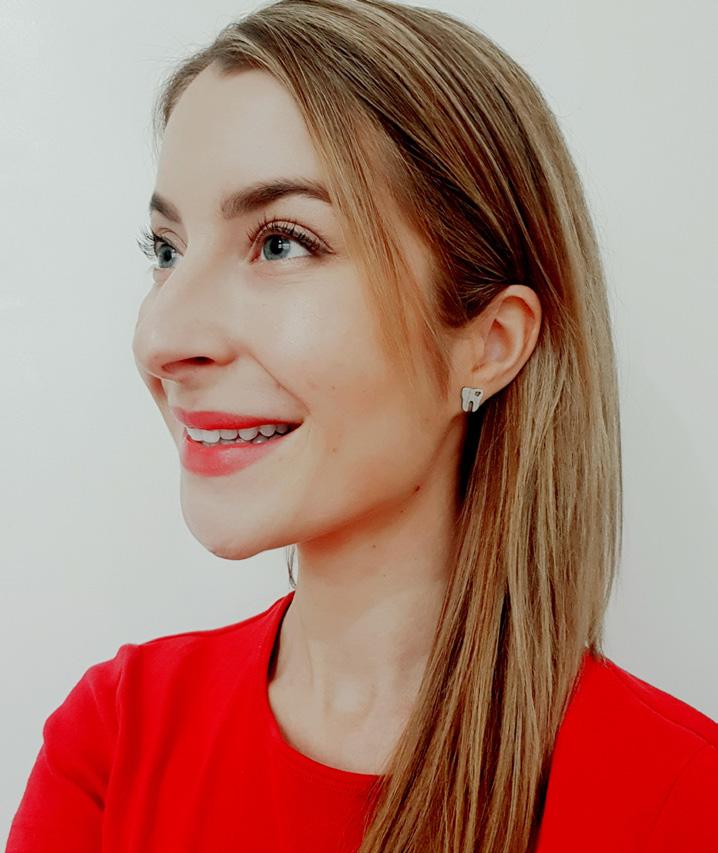
Dr Melanie Aley (nee Hayes) is a dental hygienist who has enjoyed a diverse career in clinical practice, teaching, research and management. She has a Masters of Education majoring in Career Development, and after working in multidisciplinary roles, is now an Associate Professor and the Bachelor of Oral Health Program Director at the University of Sydney.
Tell us about your dental business, including your role.
Loving Tooth Co. is a project I started during the COVID lockdown. Prior to the lockdown, I was working as a dentist in private practice in Brisbane and as a locum for the Royal Flying Doctor Service. I was very passionate about my role with the RFDS and took as much time off my day-to-day job as I could to travel to rural communities with them and provide free, quality dental care to the amazing people there.
When COVID hit this was all put on hold. Like many dental professionals I have always been creative and, suddenly, there was time to explore that! I decided to start a little business designing and selling tooth inspired accessories, with the profits donated to the RFDS. This allowed me to support them from afar, which carried through into the next phase of my life as I became a mother and took maternity leave. I am the founder of Loving Tooth Co. and do everything from designing the pieces, sourcing the manufacturers, running the website, managing finances, packaging, and posting the orders… I am a one woman show!
Julia Moldavstev
Dentist and business owner of Loving Tooth Co
CAREER DEVELOPMENT
14
Did you need any specific education or experience in establishing or running your business?
My business is aimed at dental professionals, so being in the industry was certainly beneficial as I had access to professional groups and a small circle of support initially. However, everything else has come from trial and error.
I had never designed accessories, worked with manufacturers, built a website, or officially learned any of the skills I use now.
What are the day-to-day activities in your business/role?
Day-to-day I maintain a social media presence, I package and post orders as they arrive and I run the website. When I collect enough income to develop a new product I design the product, reach out to manufacturers, negotiate with them and then have the product brought to life.
This year I added social functions to the mix and hosted a table for the Women in Dentistry breakfast at ADX Brisbane, which allowed me to give back to my loyal customers and raise awareness of the brand. Throughout the year I put profit away and at the end of the year give a large donation to the amazing RFDS team.
What’s the most interesting/exciting part of owning your own business?
I love running Loving Tooth Co. I find designing new products very exciting and having them come to life is thrilling. I have really enjoyed learning the process of running a business and riding the rollercoaster of success, rejection, breakthroughs, and flops! I have certainly grown as a person as a result.
What was the scariest/most challenging part of starting your business?
Even though this is a small business, and the goal is simply to raise money for the RFDS, it was still a scary thing to start. I had very typical intrusive thoughts like
“what if nobody likes this?” and “what if it fails?” and “what if other professionals think this is silly?” But, if something is close to your heart I think it is always worth trying. Even if it “fails” you will have learned a huge amount from it.
My greatest challenge now is carving out enough time to keep the business running and relevant, as I am at home with my little boy full time and also pursuing post-graduate study. I would often work on my phone when my son cluster fed, and now I often stay up when
he has gone to sleep to pack orders. Were there people along the way who helped you get the career you wanted? This little project has always been a “one woman show” but I have gained a lot of inspiration and support from the people around me, both in the dental field and outside of it. I have met amazing women on social media who have promoted my cause to their circles, my friends and colleagues have been huge cheerleaders, my husband has listened to me painstakingly talk about designs and my mum has gone around to clinics in her area with samples of my jewellery, bless her.
Do you have any advice for any dental practitioner who may have a great business idea that they want to put into action?
If you are a dental professional who would like to start a creative small business I encourage you to do it. Social media is an incredible tool and I highly recommend that you use it. Don’t be afraid to reach out to people you don’t know on social media – you will be surprised at the positive response you will (usually) get and where those connections take you.
lovingtooth.co

@lovingtoothco

“I had never designed accessories, worked with manufacturers, built a website, or officially learned any of the skills I use now”
DHAA... Ask
Your opportunity to ask the questions, check the rules and share your knowledge
Dear DHAA... I have been put in charge of managing my practice’s social media and I was wondering what the rules are regarding posting before and after pictures. Obviously, you must obtain patient consent but are there any rules to say we can’t? I tried looking on the ADA website and TGA but couldn’t find anything that explicitly said we are not allowed to.
Posting items on social media from a dental practitioner/practice is subject to many restrictions. Pages 20-23 of the DHAA Bulletin 62 provide an outline of key issues, and there are links to respective legislations. Take a moment to read through the article and also refer to the various links in the article.
In terms of posting before and after photos, you need to have the consent of the patient. You need to clearly and fully inform the patient where you are posting it, the audience, the purpose, etc. The photos should be de-identified. Even if you have the patient’s consent, you need to consider what message you are trying to convey to the public in accordance with the
requirements set out by the Dental Board, TGA, and ACCC.
While informing the public about the range of products and services you provide is allowed, you must not use testimonials – either yours or the patient’s – to promote your health service. You must not imply that your service is better than another in any way, and you cannot make comments or claims without clear supporting evidence. You can only provide facts that are supported by evidence.
Dear DHAA... I’m wondering what item codes I can use as a hygienist (not an OHT)? Specifically can I charge an 013 and 014?
First of all, please be clear that the provider number change does NOT change the scope of practice of oral health practitioners. Your individual scope is dependent on the training and qualification that you acquired leading to your AHPRA registration. You will also need to consider your
CPD and recency of practice registration standards.
The Dental Board expects practitioners to only practice within their scope and competence.
The provider number and item codes arrangement is purely a commercial agreement between the provider, funding agency, and the patient. As a practitioner, you can only practice within your scope legally and professionally. When it comes to seeking payment, each funding agency will make its own rules and decide what item codes they will pay to practitioners. Obviously, practitioners cannot make claims for item codes that do not fall within their scope of practice.
The DHAA ‘encourages’ members to utilise their provider numbers but we are not in the position to ask members to claim any specific item codes for the reason discussed above.
Dental hygienists are generally trained for various examinations and assessments as part of their role. So, if you have adequate training and are competent in undertaking the task as defined by the Australian Schedule of Dental Services
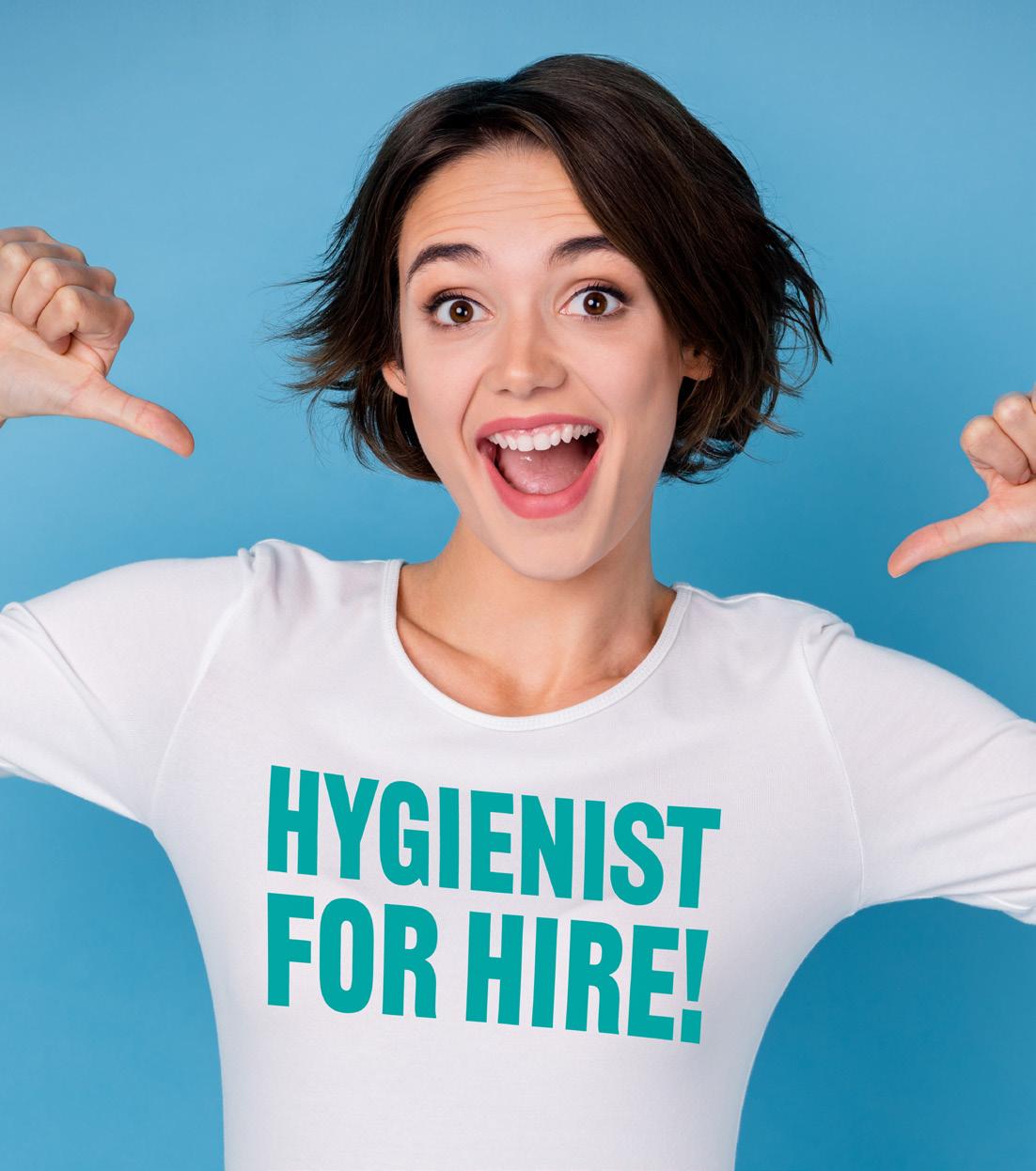
16
is fine but be sure to avoid the many legal pitfalls
Self-promotion
and Glossary, then you will be able to make a claim under the respective item code.
However, the agreement to payment will have to be made with the respective funding agencies. If you submitted a claim and it is rejected (e.g. the funding agencies does not recognise your provider number, or doesn’t agree to pay for the item code), you should re-submit with the appropriate item code and/ or provider number (of the eligible provider such as the dentist).
Dear DHAA... Can a dental practice install and operate a security camera in the treatment room?
Use of CCTV in areas where services are being provided (and workplaces) is governed by the Privacy Act 1988 and a range of different legislation in each State and Territory including criminal codes (eg Queensland). However, we are not unaware of any across the board prohibition on the lawfulness of the use of CCTV in treatment rooms.

Images being recorded of dental treatment would be considered to be sensitive information under the Privacy Act and therefore consent would have to be obtained from the patients before the images are collected. Usually, images are only particular photographs or a short video of a specific procedure, not CCTV.
Patients must have the right to consent to (or
refuse) the collection, use, and disclosure of clinical images. Only competent patients can provide consent. Where a patient lacks decision-making capacity, consent must be sought from the patient’s substitute decision-maker. For informed consent to apply, the patient, or their substitute decisionmaker, must know the following information when consenting to (or refusing) the collection, use, and disclosure of clinical images, :
a) The purpose of the clinical image, meaning why the image is being taken;
b) How the clinical image may be used. For example, an image may be used in a de-identified form for training and education purposes and who will have access to the image.
c) Whether it might be shared and disclosed to others and for what purpose and whether it will be deidentified in such situations.
d) Where the image will be stored.
e) When the image will be
destroyed. Therefore presumably this practice will be asking all patients to sign a general waiver of consent each time they attend the practice to agree to the recording of all treatment before treatment commences.
The practice may have received advice that such a waiver is sufficient to comply with the privacy principles with regard to sensitive images.
Dear DHAA... There is confusion in our practice for OHTs and OH requiring provider numbers. Our practice manager was speaking with one of our preferred providers, NIB and they mention it is compulsory for us to have one, and the grace period finishes at the end of December. I was of the understanding it was voluntary. Could you please provide some clarity and perhaps a link so I may inform/educate all involved?
The provider number and item codes arrangement is purely a commercial agreement between the provider, funding agency, and the patient. Each funding agency will make its own rules and decide what item code and under what terms and conditions they will pay to practitioners. It is up to providers and patients to agree to the terms if they wish to access the funding.
The provider numbers are issued by Medicare (Commonwealth Government) for access to CBDS, and the government decided that it is optional for providers to apply for them. However, if a provider obtained a provider number they must use it for the CDBS.
From 1 July 2022, various health funds decided to recognise the Medicare provider numbers for claiming their dental benefits (some are not recognising them). They have set their own rules and each fund is different. For example, NIB offers a transition period of six months while Medibank offers 12 months before they are made mandatory under their funding agreements with dental practices.
The joint ADOHTA-DHAA provider number position statement and other resources on our website offers further details, guidelines and education. n
If you have a question to ask then please email it to bulletin@dhaa.info
17
ALAN J. HENDRY ON UNSPLASH
A patient’s consent must be sought before any images are collected
Making your career move

With the year coming to a close it’s time for newly graduated practitioners to step out into the workforce for the first time but also a time when many of us are reflecting and changing things up by considering a new role.
There are a lot of things to consider when it comes to looking for work, both as a new clinician and an experienced one. First and foremost it’s important to understand and be comfortable knowing your personal scope of practice as your this is fluid and ever changing. While we will graduate with the exact same degree as our classmates, we all have different strengths and different passions and this will impact our individual scope and even our choice of workplace. As a new graduate entering the workforce you are likely to still be exploring your passions. As such, a general practice advertising a broad range of treatments where you are able to utilise your full scope might be the perfect start to the industry. As a more experienced clinician, you might be interested in trying a more specialised role or finding a practice that provides specific treatment modalities where you can fit in and utilise your scope in a particular area.
Searching for that job
There are a lot of places you can search for jobs. From the DHAA Jobs Board and employment websites (Indeed, Seek etc.) to word-of-mouth positions advertised online through hygiene and OHT groups on Facebook, like the DHAA Member Only Facebook Group.
When looking for jobs it can pay to look for jobs advertised for both dental hygienists and oral health therapists regardless of your registration category and have a read of the position description. Some position descriptions are quite clear in the scope they require while others are a little broader and don’t always match the advertised position title, so it can pay to reach out to the practice and ask some questions to clarify what it is that they are looking for.
Make sure your resume is up to date with relevant information and work history. If it’s your first job in dental then look at positions you’ve held previously and highlight transferable skills such as communication, customer service and time management.
By Christina Zerk
You won’t get every job you apply for so don’t be disheartened and you can always reach out to the practice to get feedback on your application so you can improve your technique for the next one. >>
18
Graduating or exploring new pastures? We explore the tips and techniques to navigate the job market like a pro
19
“We all have different strengths and different passions and this will impact our individual scope and even our choice of workplace”
Interview preparation
Everyone gets nervous at job interviews and most interviewers know this, however, it’s still important to prepare in advance to reduce the nerves and make sure you have the best chance possible. It can help to prepare or even practice answers to some of the common questions you might be asked prior to the interview.
Common interview questions include:
• Tell me about yourself / your work experience
• What are your strengths/ weaknesses?
• What are your goals?
• Where do you see yourself in five years?
• Why should I hire you?
• Why do you want this job?
• What skills or experience do you have that will help you succeed in this role?
• Tell me about a conflict you faced at work and how you dealt with it.
• Why are you looking for a job; or, why are you looking for a new job?
Good questions to ask employers at interviews
When asked at an interview if you have any questions this can be a great time to get a feel for the practice and ensure the practice will be the right fit for you.
• For positions that are advertised as part time with a view to increase to full time you can ask the interviewer what plans they have in place to increase the hours and do they have an estimated time frame they are working towards.
• What equipment does the practice use? And is training available for equipment that you haven’t used before or are not familiar with?
• What materials does the practice use?
• What instruments are in their kits (hygiene, periodontal and restorative), everyone has personal preferences from instrument handles to specific instruments we
can’t live without.
• Will you have the support of a dental assistant? Will the dental assistant be with you for the entire appointment or will they be floating between multiple clinicians/ steri room? If not with you full time what procedures will they be able to assist you with?
• If mentoring is offered ask what format this will be delivered.
– Is there formal time allocated for this in both clinicians schedules or is it more informal with you needing to approach your mentor for assistance?
– Will you be discussing treatment planning and cases or will you have the opportunity to discuss clinical techniques?
Employment awards and remuneration
Dental hygienists and oral health
therapists are on the Health Professionals and Support Services Award 2020 which outlines the absolute minimum that we should be paid. When it comes to discussing remuneration (or pay) rates it’s important to have a basic understanding of what the average rates are for the area and practice you are heading into. A good place to start researching remuneration is the 2020 Australian Oral Health Workforce Report which is available on the public domain via the University of Queensland’s open access e-space library and can be shared with employers if needed.
Infographics are available on the DHAA website.
It’s important to take other factors into account when considering your remuneration rate and these can be negotiated with the practice when the
20
”It’s a good idea to have your contract reviewed by an industrial relations advisor or lawyer, especially if there are any clauses you are unsure of“
time comes to look at your contract. Remuneration may be provided in the form of other entitlements, payments or financial reward.
Some of these may be (but not limited to) the following:
• Payment for Continuing Professional Development (CPD) courses or conferences.
• Payment of registration, indemnity insurance, and/or professional association fees.
• Work group conferences paid for by the practice.
Contracts
Once you secure a position it’s important to thoroughly read through your employment contract and understand it. Your employment contract should detail whether you are full time, part time, casual or a contractor and give an indication of your remuneration rates as well as regular hours and responsibilities.
If the position is offering a choice of an employee contract or a contractor position, it’s well worth doing some research on the differences between the two. Employee contracts mean that you are employed by the practice and depending on the type of employment you may receive holiday and sick pay (or casual loading if employed as a casual employee). You will be covered as an employee and usually paid an hourly rate with superannuation included. As a contractor, you may need to make your own superannuation payments out of your income and will need to discuss with an accountant what the tax implications are. To get a start on understanding the differences between employee and contractor you can check out our DHAA Webinar - Working as a Contractor in our DHAA Webinar Library.
It’s also a good idea to have your contract reviewed by an industrial relations advisor or lawyer, especially if there are any clauses you are unsure of. DHAA can assist with this with free contract reviews for all of our members
through our Advice and Support page on our Member Portal.
Your first day in practice
Your first day out of your dental program or at a new practice can be nerve wracking, but there are a few things you can do to make it run a little smoother. Hopefully you’ve been shown around the practice before your first day or have some time allocated before patients to be shown around and find out where things are before jumping in headfirst. Some workplaces may even have you come in for a couple of days observing one of their clinicians before jumping in and seeing your own patients - which can be a great way to get familiar with where everything is, how the equipment works and get a feel for how the practice does things and their philosophy. It’s still a good idea to try to arrive early for your first day to take the pressure off and ensure unforeseen things like poor traffic don’t throw you out.
Preparation! Preparation! Preparation! If you have a dental assistant helping out then fantastic, but if not it pays to spend some time in the morning running through your day sheet and knowing what your patients may require so you can prepare in advance. Try to have your instruments and materials ready to go on trays if possible or even have things ready in draws so when it comes to your change over time they’re easy to access without needing to find things.
Professional Requirements
As a registered health professional, it’s important to keep in mind our professional requirements and ensure we compose ourselves to the best of our ability at all times. Changes or updates to the profession will be communicated by the Dental Board or come direct to your inbox from the DHAA (if you are a member).
You need to ensure you are always providing the best evidence based practice and part of this is ensuring you
meet the mandatory CPD requirements of 60 hours over the three year CPD cycle. The current cycle has just started and runs from 1 December 2022 to 30 November 2025.
It’s also a requirement to maintain continuous professional indemnity insurance to cover you from any potential claims. It’s important that this requirement is in place during the entire time you hold an AHPRA registration (regardless if you are working clinically or taking a leave of absence). If you are finishing up practice you need to talk to your insurer about run off cover to ensure coverage for any claims arising from past work.
And while not a requirement, don’t forget to reach out and network with other clinicians. Our profession can feel isolating at times, especially if you are the only hygienist, therapist or OHT in the practice, so building friendships and professional relationships with other clinicians can help by giving you someone to bounce ideas off and share information. n
New graduate checklist:
As a new graduate there are a few things you need to ensure you are ready to step out into practice:
n AHPRA registration
n Professional Indemnity Insurance - either with your membership through DHAA’s exclusive indemnity insurance (free for students and new graduates) or from an external provider.
n Provider number (once you have secured a job, you need a separate provider number for each practice location you work at).
n Updated resumé
State based requirements:
n Radiation licence
n Working with Children Check
(Requirements may vary dependent on state or territory regulations)
21
Take the plunge...
By William ‘CJ’ Carlson-Jones
Working in a rural environment is a thought often considered among new graduates. Many may recall a rural placement as part of their studies and reminisce about the good (or sometimes not so good) experience that they had. Rural dentistry introduces its own unique challenges; however, it also has many advantages.
Patients in regional areas are some of the nicest patients you will ever come across in your working career. Some country areas can have very sporadic access to dental services and as such, they will often appreciate any fresh
face happy to serve amongst their community. What you put in and give to these areas often influences what you get out of your time spent there.
Living in geographically isolated locations can mean some patients find it hard to access dental services. This can often result in many attending for relief of pain or problem-based attendance. These scenarios can expose practitioners to advanced clinical presentations of oral disease, and depending on resources available, will often challenge you in developing problem-solving abilities.
At times you may be the sole practitioner in the area meaning anything from dental trauma, facial swellings, or broken fillings can walk through the door and into your chair. Some very remote areas may still be amongst the few areas in Australia that do not have access to fluoridated tap water and this can add additional factors to consider in a patient’s caries risk assessment. Offering quality care with a
calm and friendly manner can mean the world to your patients and thanks may be repaid in unique gifts such as homemade jams, fresh eggs and farm grown produce such as fruits and vegetables.
Living amongst these smaller communities encourages participation in sports and other community-based activities. Whether it be the local sports team, gym, or other community group, one can immerse oneself into country living, often building relationships with other professionals and at times your own patients!
Building close relationships with other professionals can help to increase awareness of what services you provide and can put a face to your name, for those whom you may refer to, or who you receive referrals from. It may also provide an opportunity to network with other dental professionals and to set up a study group to discuss aspects of clinical care. Having these connections can assist in overcoming times when you may feel isolated and left without a

Why choosing to work in a country area could be a great career move and it might just change your life
fellow colleague to discuss a case or get a second opinion.
At times you may find the availability of specialists is significantly limited in country areas compared to that in metropolitan areas. However, the ones that do visit the area you work within are usually more than happy to discuss any cases you might like their opinion on.

Additionally, working regionally enables the ability to liaise with other health professionals and teachers to raise awareness of your own role
within the dental team. This can create openings to explore areas of interdisciplinary overlap to improve the overall care for your patients. There also may be the potential to work with others to investigate opportunities for community oral health/general health promotion. As such, word-of-mouth in a small community can carry a great deal of weight in obtaining new patients to your practice and building your personal reputation.
All in all, working in a rural setting can be a very rewarding opportunity to consider, especially in your first years of clinical practice. You are likely to build close friendships with members of the community, many of whom you might continue to keep in touch with years after if you decide to relocate to a new area. It enables you to challenge yourself, build a strong foundation for your clinical skills, and finesse your problem-solving abilities to extend outside of the square. n
About the author: William ‘CJ’ Carlson-Jones is an Oral Health Therapist currently working as a lecturer with the University of Sydney teaching into their Bachelor of Oral Health program. Completing his Bachelor of Oral Health, Graduate Certificate in Oral Health Science, and Master of Business Administration CJ has strong aspirations to facilitate accessible, high quality dental care for all Australians. CJ has also commenced further studies undertaking a Doctor of Philosophy with the University of Queensland. His research will focus primarily on impact the transitional workforce from dental therapist to oral health therapist might have upon consumers, public dental services, tertiary institutions, and regional areas. He is the Vice President for the Australian Dental Oral Health Therapists’ Association (ADOHTA) and is a strong advocate for a team approach to dental care. CJ continues to strive for high-level corporate governance through his membership with the Australian Institute of Company Directors (AICD). He is a founding representative on the Colgate Advocates for Oral Health: Editorial Community.

Republished with permission from Colgate Advocate’s for Oral Health

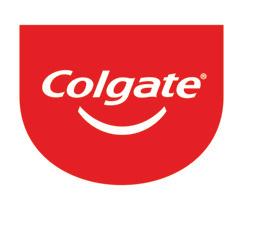
23
Charming rural villages or remote outback settlements. All need professional oral health services. Are you up for the challenge?
“At times you may be the sole practitioner in the area meaning anything from dental trauma, facial swellings, or broken fillings can walk through the door and into your chair”
MUFID MAJNUN ON UNSPLASH
My patient has fallen in my clinic. Am I at fault?
Lauren Rickersey and Annaliese Williams of leading law firm Barry. Nilsson. Lawyers explain what to do in the event of a patient falling
RISK MANAGEMENT
As an oral health professional, you owe a duty of care to your patient to ensure that no harm comes to them while meeting with you. It’s therefore crucial for you to have a thorough understanding of your professional obligations as a health professional when caring for your patients.
What are a dental hygienist’s professional obligations?
The health and safety of the patient should be the primary concern for health professionals in clinical practice.
To get a deeper understanding of what this means, let’s examine a fictitious clinical scenario.
Clinical scenario for context
Larisa attends for a consultation with a dental hygienist, Tanith, for treatment.
Larisa is lead to the clinic room and instructed to sit on the dental chair. While doing so, Tanith looks away for a moment to speak with one of her colleagues and fails to notice some wet floor in front of the dental chair. Larisa slips on the wet floor while seating herself onto the dental chair.
Tanith assists Larisa up from her fall. Larisa reports feeling wrist pain and decides to drive herself home rather than continue with the treatment that day. Tanith tells Larisa to ice her wrist. Tanith doesn’t contact her insurer and takes responsibility for the incident. She also offers a free follow up appointment.
Tanith calls Larisa a few days later to follow up and see how she is going. Larisa tells Tanith that she went to her GP for the pain in her wrist and was referred for an x-ray which confirmed that she had sustained a fracture.
Larisa blames Tanith for the fall and her wrist injury and makes a complaint against Tanith and the clinic.
What should Tanith have done?
The scenario of Larisa and Tanith displays a number of common errors that occur before and after an incident in which a patient falls at a clinic.
1. Failing to ensure that there was a safe environment before and during the provision of treatment;
2. Failing to properly assist, refer and ensure continuous and ongoing care of Larisa after her fall;
3. Failing to adequately record the incident; and
4. Failing to contact her insurer to discuss the incident should a claim be made.
proper working order;
• Do not leave the patient unsupervised during the course of treatment;
• Be aware of a patient’s medical history at all times; and
• If your patient falls, follow appropriate procedures for rendering aid.
What to do if a slip or fall happens If a patient falls, you should seek assistance from a senior colleague and make sure to notify your insurer as soon as possible.
If a slip or fall leads to a complaint or claim, please contact your insurer immediately.
In order to limit your risk of being found to be fully responsible for any injury suffered if a patient does fall, we suggest that you:
• Offer ice or treatment to help the patient in the short-term – but make sure that this is within the scope of your clinical expertise and it is appropriate to do so;
How to avoid slips and falls
Oral health professionals have a responsibility to take precautions to ensure that patients are not harmed while at the clinic.
Here are some examples on an individual level.
• Make sure that there is a safe environment when providing treatment to the patient;
• Follow proper safety procedures as outlined by the clinic and in accordance with your training;
• Make sure that any equipment is in
• Arrange transport for the patient, either to their home or to a hospital –or ask someone to pick up the patient from the clinic;
• Refer the patient for examination with a general practitioner or call an ambulance depending on the seriousness of the patient’s fall/ injury;
• Ask the patient to update you as to their progress after the incident;
• Make sure to record the incident in detail in your clinical notes; and
• Notify your insurer in case the patient decides to make a claim.
This article has been facilitated by DHAA’s trusted insurance partner BMS and written by leading health law firm, Barry. Nilsson. Lawyers.
Barry.Nilsson. Lawyers communications are intended to provide commentary and general information. They should not be relied upon as legal advice. Formal legal advice should be sought in particular transactions or on matters of interest arising from this communication.
BMS Risk Solutions Pty Ltd (BMS) AFSL 461594 ABN 45 161 187 980 is the official and exclusive insurance broker for the DHAA member insurance program.

25
n
“ If a patient falls, you should seek assistance from a senior colleague and make sure to notify your insurer as soon as possible.”
Worrying signs
In recent times, DHAA members have expressed interest in a number of emerging procedures or treatments that are far outside the interventions typically performed by dental practitioners. The NSW Dental Council has issued the following advice which, in our opinion, is very useful for dental practitioners across the country:

IN RECENT YEARS, the (NSW Dental) Council has seen an increase in complaints being made against registered dental practitioners, particularly in relation to clinicians practicing and/or teaching procedures that the Council considers unsafe. The nature of these treatments falls outside treatments or interventions which would typically be performed by a dental practitioner and the risks outweigh the benefits. The Council is concerned about the level of

With increased instances of oral health professionals exploring and developing new services, it is time to understand the boundaries
training and education that precedes these treatments because it raises doubts about the practitioner’s competency to perform these treatments.
These procedures/treatments include:
• Periocular cosmetic injections;
• Carboxy therapy (injections using carbon dioxide);
• Lipolosis (fat dissolving injections);
• Microneedling.
These procedures/treatments appear to be administered for facial aesthetic purposes such as the removal of dark under-eye circles and/or fine lines and the treatment of fat deposits.
In relation to periocular cosmetic injections, the Council reiterates that the risks of undertaking these procedures outweigh the benefits to patients because dental practitioners are not trained to recognise and manage sight-threatening complications that may result from injectables administered to the periocular region.
The Council has also seen complaints about extra-oral injection techniques such as acupuncture, dry needling and trigger point injection techniques, using Botulinum toxin and steroids, as part of treatment options for temporomandibular joint (TMJ) disorders. Some of these techniques were performed in areas such as the lumbar back region.
These complaints have also raised issues concerning the procurement and handling of medication in line with legislative requirements, concerns about the facilities where these treatments have been performed, including infection prevention and control, and other concerns relating to informed consent and record keeping.
While the overall number of complaints is small, the therapeutic risk to the health and safety of the public, when dental practitioners practice outside their expertise and skills and beyond the usual areas of the dental practice, are, in the Council’s view, not immaterial, and are, in fact,
potentially significant.
The use of botulinum toxin and dermal fillers
The Council acknowledges that the Dental Board of Australia (The Board) has defined its expectations regarding dentists and the use of botulinum toxin and dermal fillers in their practice, and they have developed a fact sheet.
When using botulinum toxin and/or dermal fillers, dentists need to practice within the The Board’s definition of dentistry. Dentists must also adhere to relevant drugs and poisons legislation and regulations and comply with the requirements of the Therapeutics Goods Administration (TGA).
definition of dentistry as follows:
” Dentistry involves assessing, preventing, diagnosing, advising on, and treating any injuries, diseases, deficiencies, deformities or lesions on or of the human teeth, mouth or jaws or associated structures.”
All dental practitioners are expected to practice within the definition of dentistry and their dental practitioner division. The Board also stipulates that dental practitioners must only perform dental treatment for which they have been educated and trained, and in which they are competent (their individual scope of practice).
Dental practitioners are responsible for assessing their individual practice and must be aware of their individual competence for each treatment/ procedure they perform. The Board has developed a reflective practice tool to assist practitioners to determine their individual scope of practice and supporting continuing professional development.
Good practice, as defined in the Board’s Code of Conduct, includes:
• Considering the balance of benefit and harm in all clinical management decisions.
Botulinum toxin and dermal fillers should only be used if the treatment can be justified. Informed consent, including financial consent, must be obtained and the risks associated with the treatment explained to the patient and documented.

Dental practitioners need to be acutely aware of the patient’s expectations regarding the use of botulinum toxin and dermal fillers and must communicate effectively with the patient to ensure that they are understood and that the patient’s expectations are reasonable or managed accordingly.
Expectations of dental practitioners
The Board provides a summary
• Practicing in accordance with the current and accepted evidence base of the health profession, including clinical outcomes.
• Facilitating the quality use of therapeutic products based on the best available evidence and the patient or client’s needs.
• Investigating and treating patients or clients on the basis of clinical need and the effectiveness of the proposed investigations or treatment, and not providing unnecessary services or encouraging the indiscriminate or unnecessary use of health services. n
This article is an excerpt from the New South Wales Dental Council Newsletter (Aug 2021). Read in full
27
Botulinum toxin and dermal fillers should be administered with documented consent
Manage your
By Brie Jones, DHAA Bulletin Editor

T HE RESPONSIBILITIES OF our profession have broadened with the addition of provider numbers and the recognition of dental therapists, oral health therapists, and dental hygienists as independent practitioners. This means we need to pay greater attention to how we view and manage our risks.


I spoke with Shamus Breen, Managing Director of BMS, (DHAA insurance partner) to understand the key risks in our profession and how to mitigate these.
Insurance requirements
As a practicing dental clinician, you must be covered by your own, or your employer’s professional indemnity arrangements. It’s
Discover the best ways to keep you and your patients safe and sound
important to make sure that your policy meets the Dental Board of Australia’s minimum requirements for professional indemnity. These include:
• Cover for all locations where you practice;
• Cover whether you are in the private sector, non-government, and/ or public sector; and
• Cover for your work type (full time, part time, self-employed, employed, or in an unpaid or volunteer capacity, or any combination of these factors).
For example, you may work at a dental clinic part-time, as well as working casually on the side at a different clinic. This will need to be stipulated on your professional indemnity insurance policy. Other insurance, like Public & Product Liability or Entity Insurance may also be needed in similar instances to ensure you’re fully covered.
BMS offers a range of insurance solutions to help ensure you’re covered across all areas of work. Cyber Liability Cover might be something to consider if you hold any patient data or records.
5 areas to help mitigate risk
1Take diligent notes
Thorough notes should comprise details of what happened during an appointment and should include:
• Information about the patient’s background including medical and social histories
• Diagnosis
• If consent was obtained
• Procedures performed
• Recommendations and treatment options;
• Details of all discussions with the patient.
It’s good practice to take notes on the day of the procedure (ideally during or straight after the appointment to ensure accuracy). Rechecking notes at the end of the day to confirm they have been completed, make sense, and are saved in the computer system is also a good habit.
2Effective communication
Effective communication can help maintain a good treating relationship between yourself and your patient. Making sure you discuss all diagnoses and treatment options is important to allow your patients to make an informed decision and provide informed consent for treatment.
3Informed consent
Informed consent can only be achieved through effective communication. Our patients must fully understand the diagnosis, treatment options, and associated costs before they can give their informed consent to treatment. Providing quotes and treatment documentation that a patient can review in their own time is a great way to help a patient consider their options before making a decision.
4
Maintain a safe environment
All practices should have a policy and procedure manual that includes an occupational health and safety policy. It’s important that you’re aware of these policies and know where to access them for future reference.
This point serves as a good reminder to always remove burs from handpieces and dispose of the LA needle and cartridge into the appropriate waste containers when not in use to prevent a sharps injury.
5
Maintain active insurance
Professional indemnity insurance is a claims made policy. This means the policy only provides cover for any prior acts as long as you have an active policy at the time of a claim. It’s therefore important to ensure you have a policy in place should you take a leave of absence (a temporary break from practising). This will ensure you’re covered should a claim arise during this time. Speak to your insurance provider for more information.
Help is always at hand...
Finally, remember that every situation is unique, so if you have a query or concern it’s important to speak directly with BMS or your insurance provider. BMS insures over 150,000 health professionals globally and has a specialised team ready to answer your questions. n
Contact BMS n Phone: 1800 940 762 n Email: dhaa@bmsgroup.com n Website: dhaa.bmsgroup.com
In arranging this insurance for our members DHAA is acting as a distributor of BMS Risk Solutions Pty Ltd (BMS) AFSL 461594, ABN 45161187980. The insurance is issued by BMS under binder with Certain Underwriters at Lloyds. When acting under a binder BMS acts as agent for the insurer and not as your agent. This is general advice only and BMS has not considered whether it was suitable for your particular objectives, needs or financial situation. Please read the Policy Wording and Financial Services Guide before making a decision about purchasing this policy.
29
The power to clean
The Curaprox Hydrosonic Pro electric toothbrush delivers stunning flexibility and performance to the home user. Curaprox ambassador Emma Cubis explains more POWER
The newest innovation in electric toothbrush technology is the sonic toothbrush. Rotatingoscillating toothbrushes were the main star of the show for many years but with up to 84,000 wonderfully gentle brush strokes per minute, the Curaprox Hydrosonic Pro is the most power you can get outside of a dental office.
Along with the innovative Swiss brush head technology developed by Professor DMD Ulrich P.Saxer and Dr Jiri Sedelmayer it is certainly a product you need to learn more about and add to your product recommendations and here’s a number of reasons why.
Hydrodynamic
The Hydrosonic Pro’s hydrodynamic effect forces oral fluid to go where the bristles cannot reach on their own. This means that bacteria or biofilm are removed by the turbulent liquid flow generated even from areas of the teeth where the bristles cannot reach on their own such as subgingivally and interproximally.
A brush head for every scenario
With three brush heads: power, sensitive and the single brush head. The Hydrosonic Pro is the ideal tool for ortho, implant, perio and sulcus care. The ideal way to use the Hydrosonic Pro is to start with the power or sensitive head then finish with the single-head. The single brush head can be used for cleaning the gum line, around dental braces and brackets, awkward positioned teeth and around implants.
Innovative brush head technology
Made in Switzerland, the extra small, drop-shaped head surrounds the tooth and easily reaches difficult areas and allows optimal cleaning tooth by tooth. The Hydrosonic Pro is the only drop-shaped sonic toothbrush which highlights the careful consideration of the design influenced by dental professionals. Furthermore, the rubberised back of the brush heads feels pleasant even if you touch the surface of the teeth.
CURACURVE ergonomics
CURACURVE is a bend of only 10 degrees on the toothbrush head and 15 degrees on the single brush head but it makes a world of difference. It is specifically designed to be the perfect angle for optimal ergonomics. You can much more easily clean the most difficult areas in the mouth - the back of the lower front teeth, the premolars and behind the furthest back molars. This is the level of precision that has been achieved when dental professionals design dental products.

CUREN filaments
A toothbrush is only as good as its bristles. CUREN filaments are made of polyester and are ideal for the hydrodynamic effect as polyester


PROMOTION
SENSITIVE SINGLE
absorbs less water compared to nylon bristles and are particularly gentle and effective for optimal prophylaxis. The sensitive brush head has 2184 filaments. The power brush head has 1401 filaments and the single head brush has 810 filaments. Compared to nylon filaments, because Curen filaments absorb less water, they remain smooth and flexible. This creates an unbelievably gentle brushing experience and enables the hydrodynamic effect to work to its fullest potential.
A range of intensity modes Start mode 44,000 movements per minute is recommended to use with a single brush head for special cleaning of contact point on orthodontic device, around implants and along the gum line.
Clean modes 64,000 movements per minute is recommended to use with the ‘sensitive’ or ‘power’ attachment.
Smile modes 84,000 movements per minute is recommended to use with the ‘sensitive’ or ‘power’ attachment.
With the Hydrosonic Pro, you and your patients will experience that professionally cleaned feeling every time you brush at home - even with braces, implants and those hard-to-reach spots. I believe sonic toothbrushes are superior to rotatingoscillating electric toothbrushes for patients with periodontal disease and the Curaprox Hydrosonic Pro is without a doubt my pick as the superior sonic toothbrush on the market. With the one of a kind Swiss brush head innovation and thoughtful design also winning the award for ‘Excellent Product Design in Medical Rehabilitation and Health Care’, the Hydrosonic Pro is the most innovative sonic toothbrush yet so simple and effective. Toothbrushing at home does not get any more precise than this. n
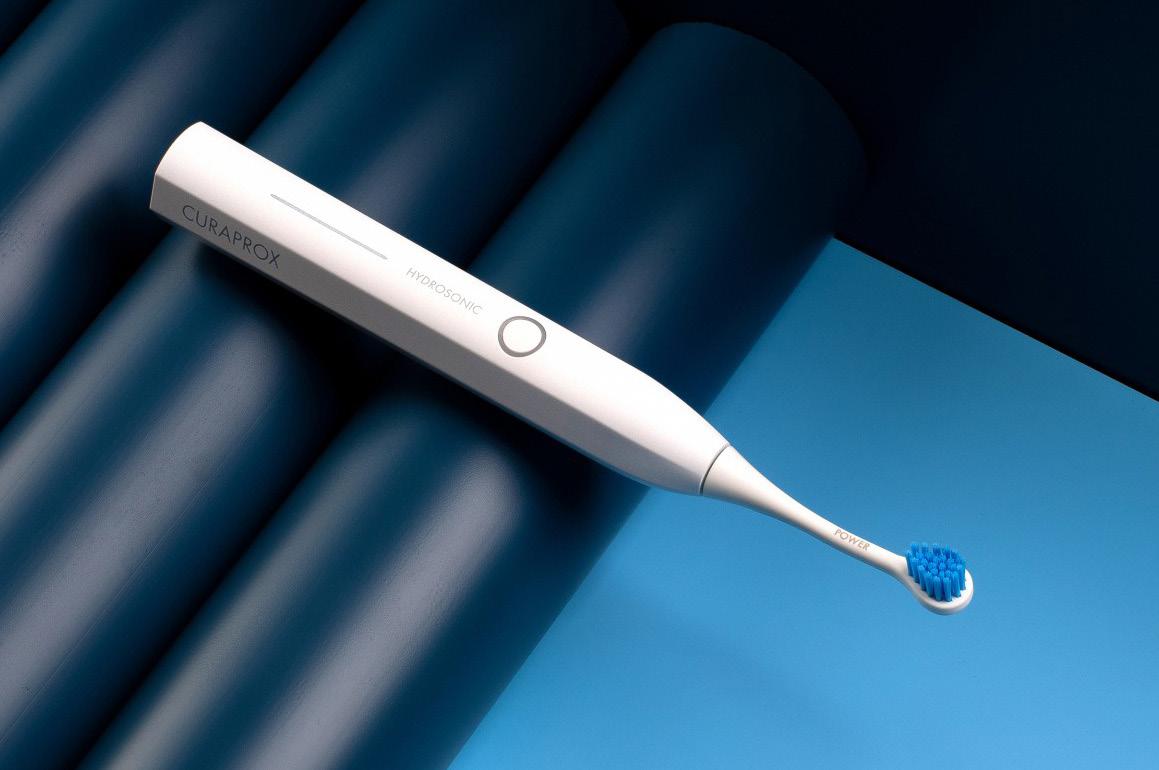
About the author: Emma Cubis, BoH, is an oral health therapist (dental hygienist and dental therapist) based in Melbourne, Australia and brings over nine years of experience to her roles within dentistry. A graduate from the University of Melbourne with a Bachelor of Oral Health, Emma’s enthusiasm for educating individuals beyond the dental clinic about oral health and it’s connection to overall wellness is magnified through her social media platforms – @emmatalksteeth.
In addition to being a practising OHT, she is also the founder and host of the Talk Dental to Me podcast and can be reached at emmatalksteeth@gmail.com

PROMOTION
How safe is your patient’s data?
By Bill Suen, DHAA CEO
Dental practitioners are covered by the Privacy Act 1988 which regulates the way individuals’ personal information is handled. The Act provides jurisdictional power for the application of the Australian Privacy Principles (APP) and its guidelines.

As registered health professionals, dental practitioners constantly handle health and personal information about patients which underpin the trust between patient and the practitioner. What is health information? Personal information collected in the course of the provision of a health service is health information, and is regarded as ‘sensitive’ under the Privacy Act. It is subject to very stringent restrictions

PRIVACY & CONSENT
How we handle a patient’s personal information is heavily governed and it’s your responsibility to know the rules
regarding their handling.
Health information includes an individual’s personal details such as name, address, medical history, appointment and billing information, and Medicare numbers. It includes any information or opinions about the health, illness, disability, or injury of an individual, as well as their expressed wishes about their health needs, and genetic information.
Privacy
The APP requires a dental practice to be proactive in the management of privacy processes and develop a culture of privacy compliance. This includes the establishment of an appropriate and effective privacy management plan and ongoing evaluation to identify and
respond to privacy issues.
There must be clear lines of accountability for managing privacy issues. Each practice must identify one or more staff members to be responsible for privacy management. The person(s) should be clearly communicated to all staff and they must be accessible to advise and assist staff to meet all privacy requirements.

A documented record of the types of health information is needed. This includes all clinical notes, general patient information (contact details, medicare, health fund), diagnostic reports, referral letters, etc.
Data breach response plan
A data breach occurs when personal information is lost or subjected to
unauthorised access, modification, disclosure, misuse, or interference. This includes the data being lost or stolen, being hacked, or mistakenly provided to the wrong person. The data breach response plan at each practice should provide a quick response to a data breach that involves containing, assessing, and managing the breach.
Collecting health information
Practitioners should only collect health information directly from the patient unless it is not reasonable or practical to do so, and by lawful and fair means. Intrusive collection is an example of unfair collection as patients may be concerned or embarrassed about discussing their health issues in an
“
open area such as the reception counter where other patients may hear the conversation.
When collecting health information, reasonable steps must be taken to notify the patient so that an informed choice can be made by the patient if he/she consents to provide the information. Some ways to achieve this are:
• A prominent display of privacy notices at the waiting room or receptionist desk
• A privacy leaflet provided to new patients
• Use a hard copy or online form with a privacy notice to collect health information
• Discussing information with the patient during a consultation session, supported by written notice. >>
There must be clear lines of accountability for managing privacy issues.”
Unsolicited health information
Unsolicited health information is information that we come across by accident, or receive but have not requested. As we generally required patient consent to collect health information, unsolicited health information must either be destroyed or de-identified as soon as practicable.
Anonymity and pseudonymity
While it is unusual for a patient to seek dental services anonymously or pseudonymously, the APP allows patients to choose anonymity and pseudonymity when seeking health services. Sometimes it is unlawful to do so. For example, when making a Medicare or health fund claim using a pseudonym might be treated as fraud.
Using or disclosing health information
We can use or disclose health information for the primary purpose for which the information was collected. In this context, we refer to any dental treatment or oral care that the patient is receiving from the collector(s). We can also use and disclose health information for other secondary purposes if:
• The patient would reasonably expect that information to be used or disclosed, and
• The secondary purpose is directly related to the primary purpose.
Examples are OPG orders, referrals to other health professionals, and also communication within your practice’s dental team. Other situations include billing, complaints handling, PI insurance notifications or legal proceedings relate to the treatment.
It must be noted that members of
a dental team must not access the health records of patients if they are not providing treatment or services. For example, when you see your neighbour came in for dental treatment by another dental practitioner and you decide to have a look at his records to see what he is getting done just for interest. This is not allowed under the Act as you are not involved in his treatment.
Patient access to health records
Patients have a right to access the information we hold about them and generally we must respond to a request within 30 days.
A reasonable fee may be charged to cover the cost of retrieving and providing the information.
Children and individuals that lack physical/mental capacity
For children or individuals that lack the physical/mental capacity to make informed decisions about their own health, information may be collected from or disclosed to a ‘responsible’ person. This may be a parent, a child or sibling (over 18 years old), a spouse or de facto partner, a relative that is part of the same household (over 18 years old), a legal guardian or person with an enduring power of attorney, a person who has an intimate personal relationship, or a person nominated by the patient to be contacted in the case of an emergency.
It is essential to keep thorough documentation of all patients records

the practitioner receiving the consent or request for records to establish whether or not the child is capable of giving consent. As a general principle, a person under the age of 18 has the capacity to consent if the individual has a sufficient understanding of what is being proposed. The practitioner needs to consider the following:
• The child’s maturity
• Degree of autonomy
• Understanding of the relevant issues and information.
Even if the practitioner determines that the child does not have the capacity to consent, the child may still be able to contribute to the decisions and should be involved in the process where possible.
Consent
or access requests from a child’s parent or legal guardian
There is no official consent age for a child. A child’s parent or guardian is able to seek to access the child’s health information or make decisions on behalf of the child under their care. It is up to
Child consent is challenging in some circumstances. For example, if a child explicitly indicates that certain information not be disclosed and a parent seeks health information of that child. A common situation is when there is a family breakdown or parental separation, the practitioner should clarify the arrangements before disclosing the child’s health information.
34
Incapacity
Patients may not be able to give consent because of physical or mental impairments that prevent them from understanding the issues and making informed decisions. Common examples are patients with advanced dementia or who are unconscious.
In these cases, the ‘responsible’ person should be contacted for consent.
Correction of health information
Dental practitioners must ensure the health information they hold about the patients are correct and only relevant for the purpose for which it is held. The information should be corrected if the practitioner believes the information is incorrect, or the patient requests the practitioner to correct the information. Generally, practitioners must respond to the patient’s correct request within 30 days. The patient must be notified if the practitioner refuses to correct the information.
Incorrect information includes information that is inaccurate or
contains an error, is out of date, is incomplete, irrelevant, or misleading. Please note that the practitioner’s professional opinion is not incorrect if the patient or another professional disagrees, provided it is recorded as an opinion. Good clinical notes should take into account competing information and opinions.
Health information collected, used, and disclosed without consent
Health information may be collected, used, and disclosed without consent if it is required or authorised by or under an Australian law or a court/tribunal order. For example, many jurisdictions have legislation for compulsory notification of certain communicable diseases, including COVID during the aggressive pandemic periods.
Health information may also be handled without consent where it is unreasonable or impracticable and it is necessary to lessen or prevent a serious threat to the life, health, or safety of any individual, or to public health or safety.
Health management activities
The Privacy Act 1988 has a provision for the disclosure of health information without consent for certain health management activities. Such activities are activities that are reasonably necessary for the ordinary running of a dental practice. They may be activities undertaken by quality assurance or accreditation bodies monitoring service quality, or a health endurance fund checking for fraud or payment confirmation. Under these circumstances, health information that is necessary for health management activities may be collected without consent, if de-identified information is not practicable or inadequate, or if it is impracticable to obtain consent.
General rules
The issues of privacy and consent in dentistry are complex in accordance with the Privacy Act 1988 and the Australian Privacy Principles. The following is a summary of the general rules:
• All information related to a patient’s personal details and medical history is health information and must be treated as sensitive information.
• The dental practitioner and/or the practice are bound by the Act in terms of the collection, storage, disclosure, and handling of health information.
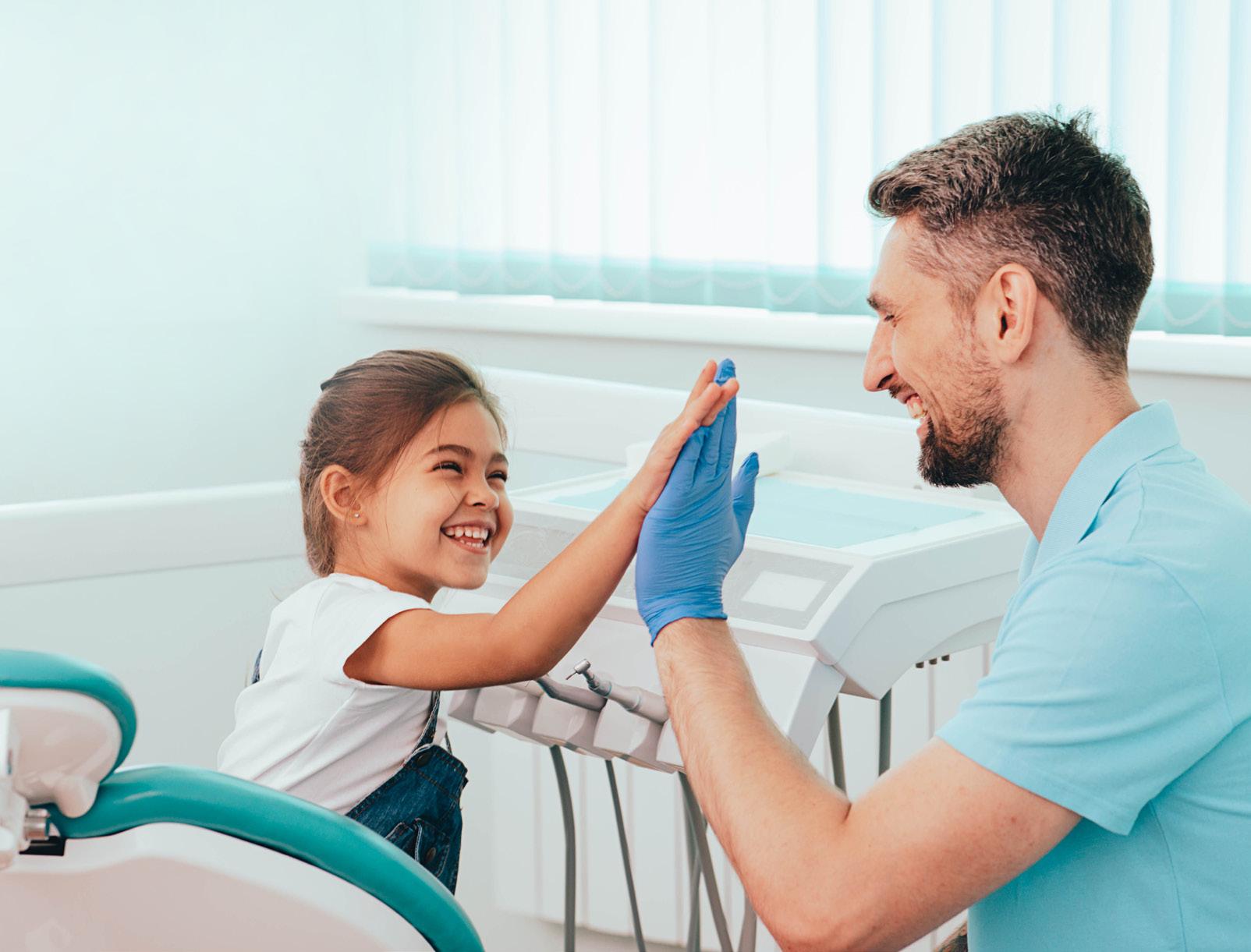
• Consent must be obtained unless under certain circumstances as described by the Act.
• Health information can only be used for its primary purpose, and in some circumstances, secondary purposes.
• Patients have the right to access and correct their health information.
• There is no legal consenting age as prescribed by the Privacy Act, dental practitioners must exercise their professional judgment to determine if the child has the capacity to consent. n
35
“ Child consent is challenging in some circumstances”
something Do different
If life is getting you down, then try changing it up a bit
By Lyn Carman
It’s that time of year again… already! A time of renewal and reflection; excitement and planning; for building and creating your vision for the new year.
Dreaming of your ideal life, year, month, week…your ideal day!
Currently there are many oral health professionals (OHPs) who are far from experiencing their ideal day. Some express this openly on socials, some rant and vent with their colleagues, family and friends, some just feel it and many simply know, deep inside, that there must be more.
Whether you’re a new graduate or your career has spanned decades, creating your ideal day is one of the most powerful exercises to undertake.
Finding yourself in a role that is uninspiring, disempowering, boring and toxic, for a short or extended period, impacts every part of your life. It’s your
responsibility to you to seek more… and there is so much more!
Speaking with many OHP’s across the country, I notice a theme; ‘Beige’. It describes a feeling of acceptance for their ‘lot in life’. Don’t get me wrong, we always have so much to be grateful for, but ‘beige’ is an acceptance of mediocrity, humdrum, colourless, uninspired, second-rate, dull, middling, vanilla, ordinary, so-so, tolerable, passable and indifferent.

So, what stops us from living our ideal day, our ‘best life’? What keeps us in the same ‘beige’ role? Justifications can be; I don’t want to leave my patients; it’s close to home; the pay is good; it’s convenient; it could be worse; I might not get another position; I like my colleagues; what if this is the best I can get? And, I’ll think about it after this or that happens… blah!
Yet the feelings that sit under this are; “I don’t feel happy; I’ve lost my passion for my role; I am bored; angry and depressed.” Basically, it’s all ‘beige’!
Change is the only constant in life, but change can be difficult. Change is what our neurons resist, they continue to loop us into the same comfortable pathway of thinking. The neural pathway that tells us it’s scary to do something different,
and ‘you’re not good enough’ or ‘what if...?’ We are held back by our thoughts and our limiting beliefs. So, we stay in our comfort zone, justifying and blaming our situation, our circumstances and the people who are not valuing us, utilising us or respecting us. Or perhaps it’s just simply that nagging little voice that is saying ‘there must be more’ while you dig in and continue to live out your limited moments – ‘Beige’.
But, there’s a whole rainbow of colours to experience, to live. So, if you resonate with any of this at all, then I ask you to stop here and give yourself the time to do this exercise. Find a comfortable position, allow yourself to be still, drift off in thought and take your time with each step.
• As you continue to live ‘beige’, as you continue to loop around the same neural pathways, the thinking that keeps you stuck doing what you are doing; consider and imagine what your career/life will look like in six months from now as nothing changes. What will it feel like and be like?
• When you have that image clear in your mind, and you continue to live ‘beige’, what will it feel like and be like in a year’s time? Close your eyes and see and feel into it as nothing changes, as you justify your choices, as you do nothing different.
• With that image clear in your mind, you should almost be able to feel the weight of it. Now stretch your imagination to whatever is comfortable for you – be it five or 10 years or even 20 years of living ‘beige’, and now picture who you are being; how you are feeling; what you are seeing around you when nothing changes. Sit with that for a moment...
Now go ahead and give yourself a shake, look around and take three deep breaths. What will happen now, when we ask some different questions?
Take a moment now to dream of
36
how you would like it to be. Perhaps it’s time to listen to that little voice, allowing it to become louder and really feel how you would like it to be, without limiting yourself and being curious about other neural pathways that exist. Perhaps it’s a new job; a new role; a new area to move to; a new town; a new state or country. You are inspired and love your role, you feel supported and valued by the practice owner, the team and your patients, you believe in yourself and your skills, and have a queue of patients waiting to see you, you are living your ideal day… your best life. Or whatever your dream looks and feels like for you.
Change
• Now with that in mind, take yourself out in time to six months from now. Feel, see and hear who you are being.
• When you have that locked in, take yourself one year from now to feel and see what has changed, all the amazing flow on effects of who you are being now.
• Then stretch it to five, 10 or 20 years. See, feel and hear all the amazing things you are achieving, the life you’ve built and created. The things you set in motion all those years ago and the ripples that have occurred from this. Take time to really feel it and hold onto this… it’s yours.
“All things are created twice; first mentally; then physically. The key to creativity is to begin with the end in mind, with a vision and a blueprint of the desired result.”
Stephen R. Covey
Doing things differently is change. Change is part of our every day. Every moment, something changes. Every day, we change. Change is movement – it’s fluid, it rolls and shifts – it’s not rigid, stuck or solid.
Change is the only constant in life! Whatever we do, change will happen. So, grab hold of the rudder and start steering. Focus on how you would like it to be and create your ideal day.
It’s your ideal day to create, make a move, take a step and create the first mental picture, the blueprint and desired result. Keep it close, write it down, pin it up and feel the shift. It’s going to be amazing.

If not now... When? n
Visit lyncconsulting.com.au to download your ideal exercise
37
is the only constant in life, but change can be difficult
A full
state-by-state
run-down of Association happenings around the country
STATE NATION
ACT
ACT contacts: Director Amy McDermott directoract@dhaa.info
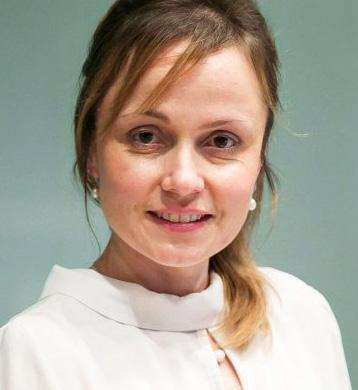
Chair Kate Spain. chairact@dhaa.info
n The full-day education program on Saturday 17 September at the popular QT Canberra was well attended by ACT members.
The end of year celebration was held at the East Hotel on Saturday, November 26. The halfday CPD covered many interesting topics such as the Australian Dental Health Score Card, TMJ Pain management, Diabetes, and Impacted Teeth. Attendees had a great catchup over lunch before we reach the busy end of year period.
While the 2022 ACT events had all been successfully completed, the committee has been working hard to prepare for new events in 2023. The first face-to-face event will be a dinner on Tuesday 7 March. We will be presenting the Tammie Birch Inspiration Award. If you wish to nominate a colleague, please email: chairact@dhaa.info. Please save this date for a great catchup in the new year.

A great turn out by the ACT members, as always
NSW
(pic right) was run on Saturday 10 September at the Rydges World Square with a full house.
NSW contacts:
Director Warrick Edwards directornsw@dhaa.info
Chair Jody Inouye chairnsw@dhaa.info
Deputy Chair Jinous Eighani-Roushani contactnsw@dhaa.info
n The full-day introductory iTOP Oral Hygiene Instruction workshop presented by Dr Tihana Divnic-Resnik
NSW Orange members got together on 5 November for a full day seminar covering periodontics, TMJ, ethics, and domestic violence in dentistry. We were fortunate to have great speakers such as Dr Joseph Ryan, Dr Jake Ball, Dr Sabrina Manickam, and Ms Karyn Battersby travelling to Orange to present to our local members.


NSW is now taking a break and will return in the new year on 25 February with a full day at Newcastle. We look forward to seeing you all then.

NTNT Contact:




Director Hellen Checker. directornt@dhaa.info
Staff Bill Suen bill.suen@dhaa.info
n The NT is still seeking a local member to be the DHAA representative/chair. The role is to be the local eye and ear for issues pertaining to NT. Please contact either Hellen or Bill for further details or discussion regarding the role. We are also planning for joint DHAAADOHTA events for 2023, with a joint ADOHTA-DHAA workshop on the drawing board for 17 June. Please save the date and we will provide further information soon.
Qld
Qld Contacts:
Director Carol Tran. directorqld@dhaa.info
Acting Chair Stacey Billinghurst contactqld@dhaa.info
n The Queensland Committee held a gettogether evening on Friday 25 November at the CQU Brisbane campus. The session invited Aneta
Zielinki, Dalton Giang, and Rebecca Ramsay to share their journey in perio, paediatric and ortho practices. This was an excellent session for attendees to understand various specialist practices and explore career opportunities.
The CPD program in Queensland will kick off on 28 January with a joint DHAA-ADOHTA hands on workshop in Brisbane. Members are encouraged to mark this date in the diary and secure a place as soon as registration is open, as places are very limited.
displays provided samples and information on the latest dental products.
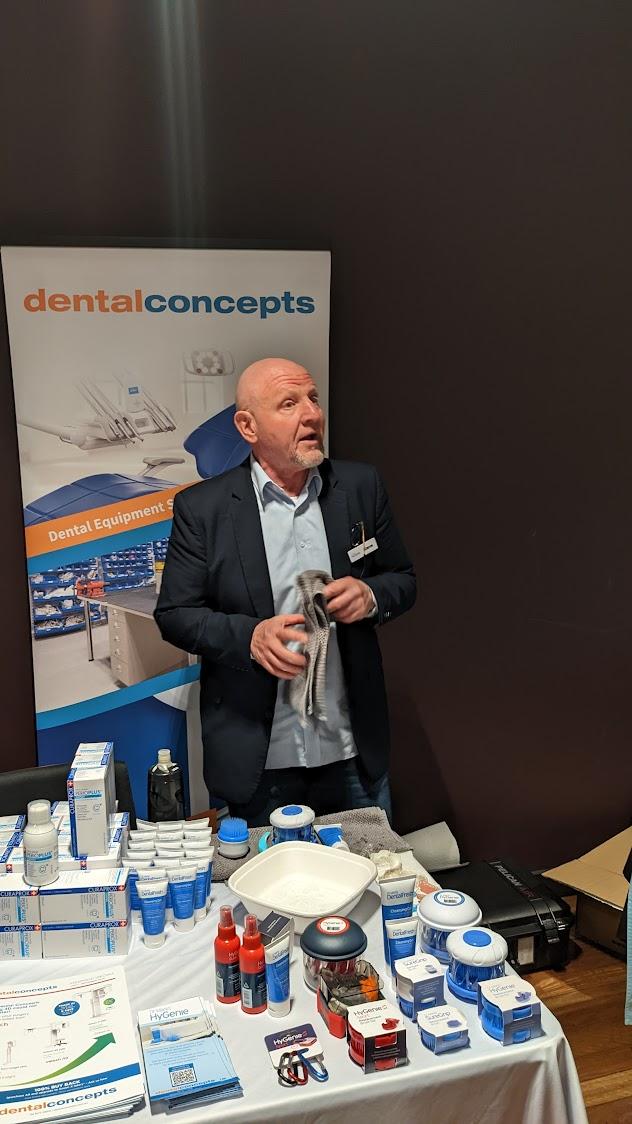
n The full education day at the National Wine Centre on Friday 23 September was a sell out with over 110 attendees. Dr Helen Mclean AM, Dr Janet Scott, Professor Mark Tenant, Dr Holly Byron and Dr Viktor Mak shared their expertise while a number of trade


The SA Committee also hosted its end of year celebration on Sunday 4 December at Jarmer’s Kitchen. The Christmas champagne brunch with Dr Julie Monis-Ivett OAM presenting her work to help people in developing countries, was another event that brought insight and inspiration to those who were lucky enough to have the opportunity to attend.
To help members plan their CPD in the new year, the South Australian committee has secured its destination weekend venue
for the 18 March 2023. The event is to be held in the scenic historic town of Willunga, with a full day sixhour CPD program. Please save this date and we look forward to seeing you and your family there for a great weekend away. >>
39
For all the latest info on DHAA events please visit www.dhaa.info/events
Director
cheryl.dey@dhaa.info Chair
chairsa@dhaa.info
contactsa@dhaa.info
SA SA Contacts:
Cheryl Dey
Sue Tosh
Deputy Chair Sally Hinora
Resort is set to host a full-day event
Save Say something Turn on motion dentalconcepts DentalEquipment
A full
yum!
in September “ To help members plan their CPD in the new year, the South Australian committee has secured its destination weekend venue for the 18 March 2023”
dentalconcept:
day of education at the National Wine Centre...
n The full day event at The Grange Estate, Campbell Town was well attended by local members. Presenters included Dr. Tony Eldridge, Colleen O’Callaghan, Kate Phillips, and Susan Rusalen. who provided a variety of clinical topics from TMJ, Orofacial myology, special needs dentistry, and dental hygiene. It was the last event Alyson McKinlay (pic above) chaired and hosted in her official capacity as DHAA Tasmanian Director. Alyson
has been actively involved with DHAA in Tasmania for over a decade and we are all very grateful for her tireless work connecting local members. Her Tasmanian DHAA Director’s role is now vacant together with the Tasmanian Chair role.
A call out to all Tasmanian members - If you would like to help out in planning and running events and be part of our executive group to give back to the profession we love and enjoy, please contact Bill for more details.
We have already planned two great Tasmanian events with the ADOHTA for 2023. A hands-on workshop day in Hobart on 25 Feb, and a full day seminar in Launceston on 18 November. Please keep these days free and we look forward to getting together with our colleagues then.
Vic Vic Contacts
Director Roisin McGrath directorvic@dhaa.info
Chair Desiree Bolado chairvic@dhaa.info
Deputy Chair Aimee Mills contactvic@dhaa.info
n Congratulations to Dr Roisin McGrath who was elected as our new Victorian Director. She replaces Dr Ron Knevel as he relocated to Perth to take up the role of Head of Oral
health at Curtin University. Ron continues to serve on the DHAA Board as an external director.
Living up to the Victorian tradition, members enjoyed our Christmas event on 3 December at the Kooyong Tennis Club. They were treated with great CPD topics presented by Sue Rusalen, Paulette Smith, Dr Mark Wotherspoon, Dr Ahmed, A/Professor Matt Hopcraft, and Dr Roisin McGrath. Topics covered include mental health, aged care, microbiological testing, occlusal sprints, and teeth whitening. There were plenty of ideas to stimulate attendees’ thought processes and assist in making their new year›s resolutions.
Victoria will kick start the CPD program in the new year by hosting a joint DHAA-ADOHTA hands on workshop on 28 January. As the places are limited and to be shared with ADOHTA members, please look out for registration information and book your ticket as soon as possible to avoid missing out.
WAWA Contacts
Director: Phoebe Thomas . directorwa@dhaa.info
Chair: Carmen Jones chairwa@dhaa.info
Deputy Chair: Rhonda Kremmer contactwa@dhaa.info

n The WA end-of-year celebration was held on Saturday 26 November at Bentley Curtin University’s well equipped function room. We were fortunate to have Winthrop Professor Marc Tennant AM presenting on COVID and dentistry, and Dr. John Marsell on forensic odontology. Members also mingled over drinks to celebrate another challenging but fulfilling year.
The WA Committee under Chair Carmen Jones has been working very hard and they have already planned an exciting 2023 event schedule, to commence on 26 February with a brunch CPD event. Please mark this date in your diary and look out for more details on the program and registration.
40
TasTAS Contacts: Staff Bill Suen bill.suen@dhaa.info
“ The WA Committee under Chair Carmen Jones has been working hard and have already planned an exciting 2023 event schedule”
“ It was the last event Alyson McKinlay chaired and hosted in her official capacity as DHAA Tasmanian Director ”
“ Victoria will kick start the CPD program in the new year by hosting a joint DHAA-ADOHTA hands on workshop on 28 January ”
Event Calendar
FEBRUARY 2023
n 4 February Joint Hands-On Workshop with ADOHTA Brisbane, Qld
n 8 February Webinar Online CPD: 1 hour n 22 February Dinner Meeting Melbourne, Vic CPD: 1 hour n 23 February Webinar Online CPD: 1 hour n 25 February Joint Hands-On Workshop with ADOHTA Tasmania n 25 February Full Day Newcastle, NSW CPD: 6 hours
n 26 February Breakfast Western Australia CPD: 3 hours
MARCH 2023
n 4 March Joint Hands-On Workshop with ADOHTA Victoria n 7 March Dinner Meeting Australian Capital Territory CPD: 1 hour n 8 March Webinar Online CPD: 1 hour n 11 March Half Day Brisbane, Qld CPD: 3 hours n 18 March Destination Full Day South Australia CPD: 6 hours n 23 March Webinar Online CPD: 1 hour
APRIL 2023
n 12 April Webinar Online CPD: 1 hour n 27 April Webinar Online CPD: 1 hour n 29 April Half Day New South Wales CPD: 3 hours
MAY 2023 n 6 May Joint Hands-On Workshop with ADOHTA South Australia n 10 May Webinar Online CPD: 1 hour
n 20 May Joint Hands-On Workshop with ADOHTA Western Australia n 25 May Webinar Online CPD: 1 hour
JUNE 2023
n 14 June Webinar Online CPD: 1 hour n 17 June Joint Hands-On Workshop with ADOHTA Northern Territory n 17 June Full Day Western Australia CPD: 6 hours n 23 June Dinner Meeting South Australia CPD: 1.5-2 hours n 29 June Webinar Online CPD: 1 hour
41
Continued on the next page... n ACT n NSW n NT n Qld n SA n Tas n Vic n WA Key to the state colours
Get your diaries out and book your time off – these events should not be missed
Event Calendar
Continued from previous page...
JULY 2023
n 12 July Webinar Online CPD: 1 hour n 15 July Full Day Victoria CPD: 6 hours n 22 July Full Day Sydney, NSW CPD: 6 hours n 22 July Webinar Online CPD: 1 hour
AUGUST 2023
n 2 August Dinner Meeting
Australian Capital Territory CPD: 1 hour n 5 August Full Day Queensland CPD: 6 hours n 9 August Webinar Online CPD: 1 hour n 24 August Webinar Online CPD: 1 hour
SEPTEMBER 2023
n 13 September Webinar Online CPD: 1 hour n 21-23 September National Symposium Adelaide

OCTOBER 2023
n 11 October Webinar Online CPD: 1 hour n 21 October Joint Hands-On Workshop with ADOHTA New South Wales n 26 October Webinar Online CPD: 1 hour n 28 October Joint Hands-On Workshop with ADOHTA Australian Capital Territory
NOVEMBER 2023
n 8 November Webinar Online CPD: 1 hour n 12 November Half Day Western Australia CPD: 2 hours n 18 November Joint ADOHTA Full Day Launceston, Tas n 23 November Webinar Online CPD: 1 hour n 25 November Half Day Australian Capital Territory CPD: 3 hours
DECEMBER 2023
n 2 December Christmas Brunch Victoria CPD: 4 hours
n 2 December Christmas Brunch Queensland
n 3 December Christmas Brunch South Australia
n 13 December Webinar Online CPD: 1 hour
42 Be sure to bookmark the 2023 DHAA National Symposium n ACT n NSW n NT n Qld n SA n Tas n Vic n WA Key to the state colours
Develop Empower Support
STRIVING FOR EXCELLENCE
www.dhaa.info





















































































